Directly across the street from the RV park where we were staying for the week was the Chickasaw Cultural Center. Everyone had told us that we should spend some time there. It is everything, and more, than I expected!
The large campus shares treasured traditions of Chickasaw life with artifacts, historical objects, film, stomp dance demonstration, artwork, and their Hall of Fame. We stopped first at the Visitor Center and picked up a map of the center. Our first stop was the Aapisa’ Art Gallery. Rotating exhibits are shown here.
The exhibit: “Aprons: Tying Together Chickasaw Kitchens” was on display during our visit.
Nearby is the bronze sculpture of a 14thcentury Chickasaw, The Warrior, by Kelly Haney.
Note the traditional hairstyle with feather, bear claw necklace, and bow and arrows.
Note the traditional hairstyle with feather, bear claw necklace, and bow and arrows.
The Chikasha Poya Exhibit Center is a world class museum. Admission is free for Chickasaw citizens and children under 12; $7/adults; $6/senios, military or other recognized tribal citizens.
Near the entrance is The Sacred Pole. Chickasaw oral history tells of the great migration when a pole was placed in the ground each night. The direction the pole was leaning was the direction the tribe would travel the next day. When the pole stood straight, it was a sign from the creator (Aba’ Binni’li’) that the journey was over. The Eternal Flame is symbolic of Chickasaw commitment to honor, preserve, and protect their history, culture and traditions. The annual Green Corn Ceremonies involved the lighting of the sacred flame that was maintained throughout the year.
The museum experience begins with a video (very well done) that tells the history of the Chickasaw people. A mosaic, map, and circular sunlight can be seen in the room where we waited a couple of minutes for the next video to begin in the Council House Theatre.
The Chickasaw are direct descendants of the moundbuilders of the Mississippi and Ohio Rivers (as are many other tribes), the Mississipians were active between AD 900 – 1700. The Indian Removal Act of 1830 (signed into law by Andrew Jackson) forced the removal of the Chickasaw from the homeland to the Indian Territory (present-day Oklahoma) between 1837 and 1851). Three thousand made the trip and 500 died along the Trail of Tears (primarily of small pox and dysentery). The Chickasaw have remained strong and committed to maintaining their culture, language, and traditions.
After the video, we walked into the Spirit Forest, a magical experience with the use of lights, audio (for storytelling and sounds of the forest) and set design. Loved it!
The Exhibits Gallery displays artifacts, historical objects and reproductions of the Chickasaw Nation while telling the story of their way of life.
The dramatic Removal Corridor tells the story of the difficult journey of the Chickasaw from their Homeland to Indian Territory with art work, sounds, and stories. The Stomp Dance is a tradition that travelled with the Chickasaw from the Homeland to the Indian Territory.
And the Chickasaw have survived and continue to thrive here. There are multiple “language boards” throughout the Gallery, and we practiced saying some of the translations. What a great way to keep the language alive.
Chickasaw warriors have proven to be courageous fighters throughout their history, including their service in all wars of the US.
Near the Exhibit Gallery is this bronze sculpture, The Arrival, by Mike Larsen. It represents a Chickasaw family arriving in Indian Territory.
Twice a day, there is a demonstration at the Amphitheatre of the treasured traditional Stomp Dance by tribal dancers. A male leads the dancers counterclockwise around the fire. With their hearts close to the fire, the smoke lifts their prayers to Aba’ Binni’li’, the creator. Men participate in a call/response songs, while women wear shakers on their legs.
Some of the shakers were made of turtle shells or deer hooves (as shown below).
Some of the shakers were made of turtle shells or deer hooves (as shown below).
Continuing to the Sky Bridge, we were treated to a birds’ eye view of the Traditional Village. It is an historically accurate reproduction of a Chickasaw village in the Homeland. Note the ceremonial mound in the distance and the plaza would have been a stickball field.
The Council House (largest building) was a community building where tribal activities and ceremonies were held. We walked down to the village from the Ski Bridge and into the Council House.
A couple of summer houses and circular winter houses, with household items, can be toured. When we were in Mississippi, we saw these exact same kinds of houses, not realizing they were the Chickasaw before the Removal Act. The Corn Crib was built only stilt to protect food from rodents, insects, etc.
We continued towards the pond passing by Holisso, the Center for the Study of Chickasaw History and Culture building.
We both loved this bronze sculpture of two Chickasaw hunters in the Homeland (MS, AL, TN, KY) by James Blackburn. It is named Omwatta which means “they’re hunting.”
Turtles and catfish swam to the Water Pavilion looking for food (you can purchase some food there for a quarter) when we walked out to it.
On the opposite shore is the Honor Garden with etched plaques for each Chickasaw Hall of Fame inductee. The design is a plaza with a central fountain and gardens. Again, a beautiful monument to these individuals.
Several folks had told us how good the food was at the Aaimpa’ Café, so we stopped in for a snack and something cold to drink (and to get out of the heat!) John had the chili and I had a traditional cooked fruit dish. Both were delicious and very reasonable.
Be sure to check out the gift shop for unique items by Chickasaw members and other souvenir items.
We both thoroughly enjoyed this cultural center. Everything is so well done with a modern, high tech approach to the treasured history of the Chickasaw people. What a wonderful learning experience. We’ve already decided that we will visit several other historically significant Chickasaw sites in the area tomorrow.
For additional information about the Cultural Center, go to www.chickasawculturalcenter.com.
.
.

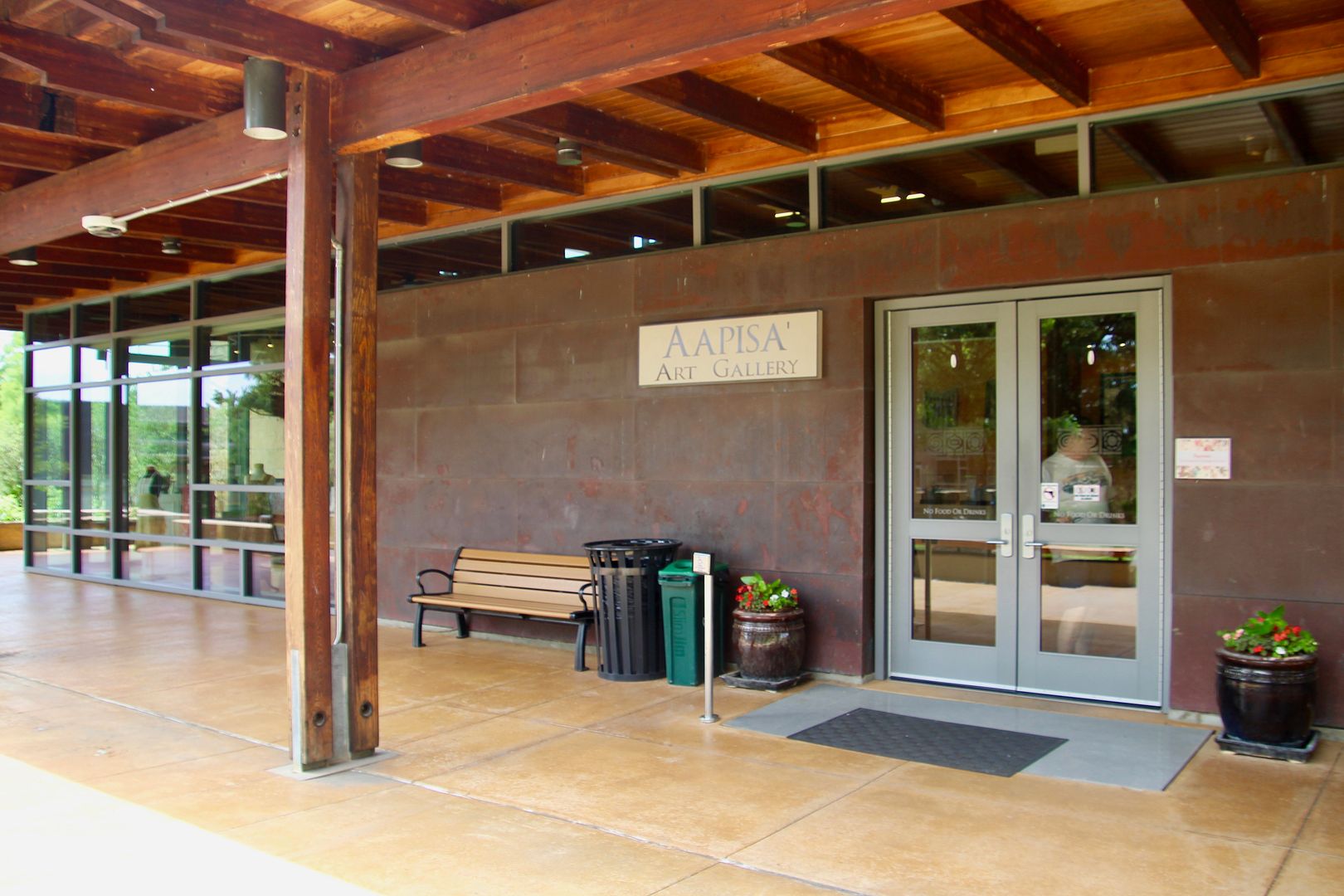
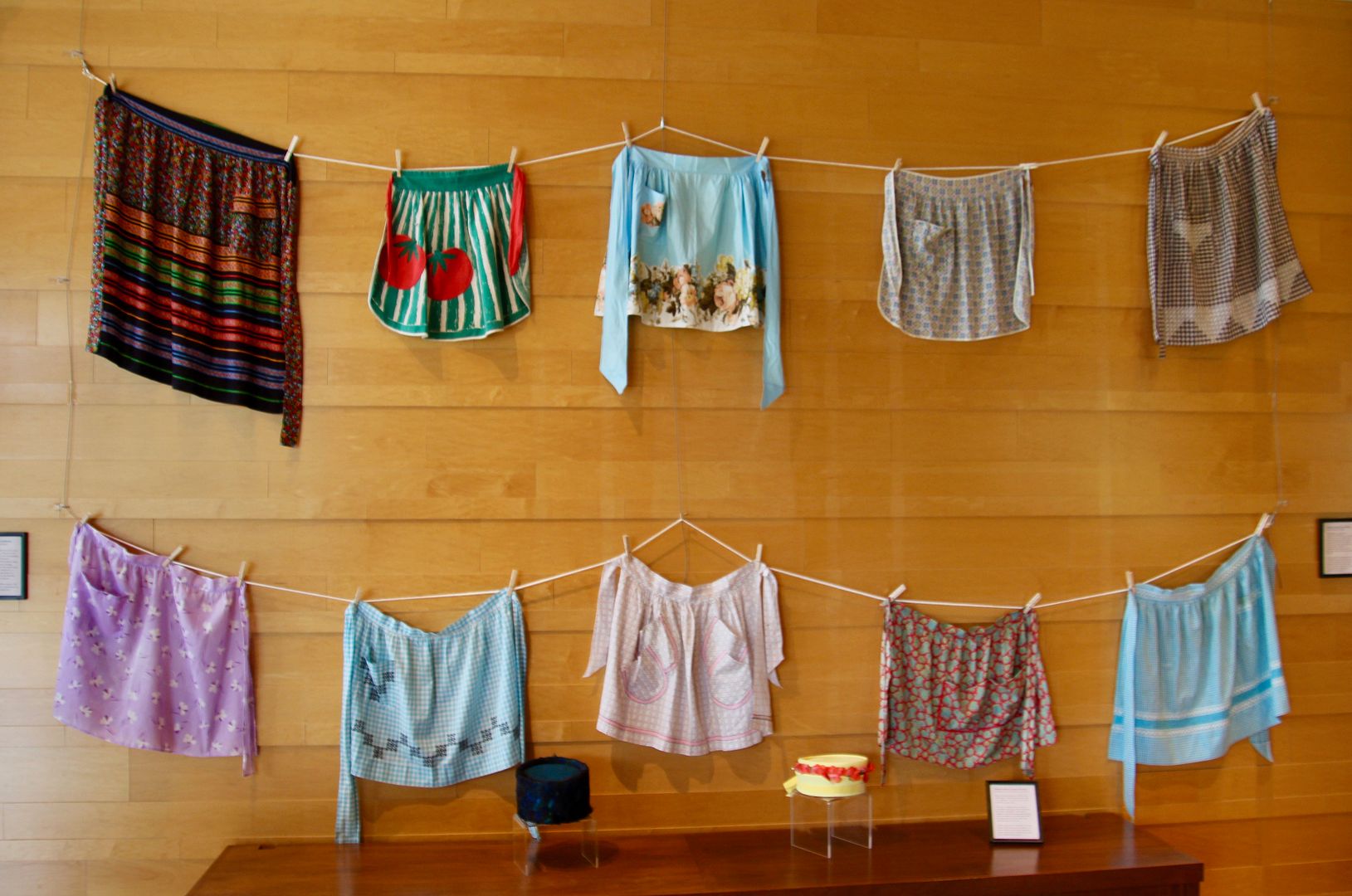
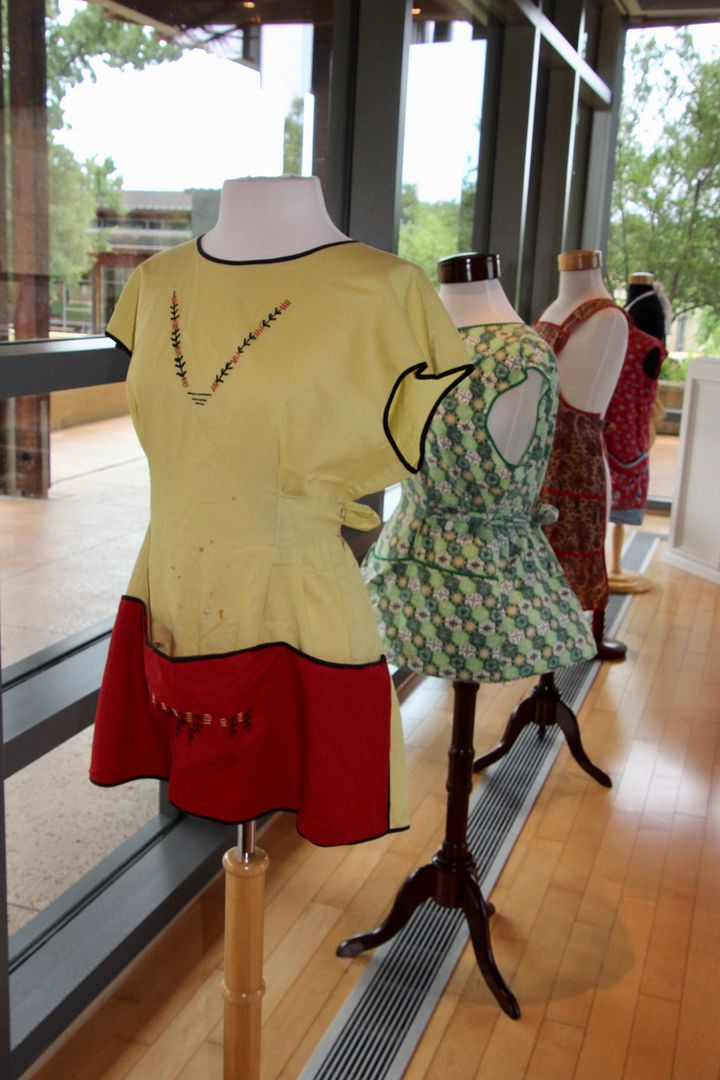
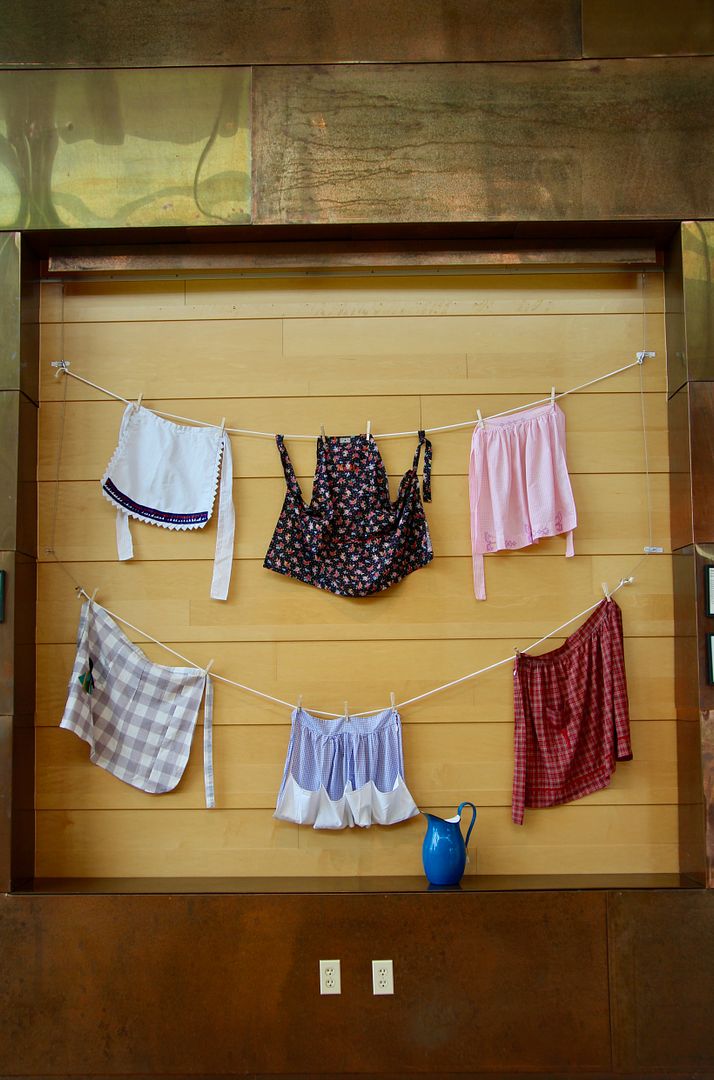
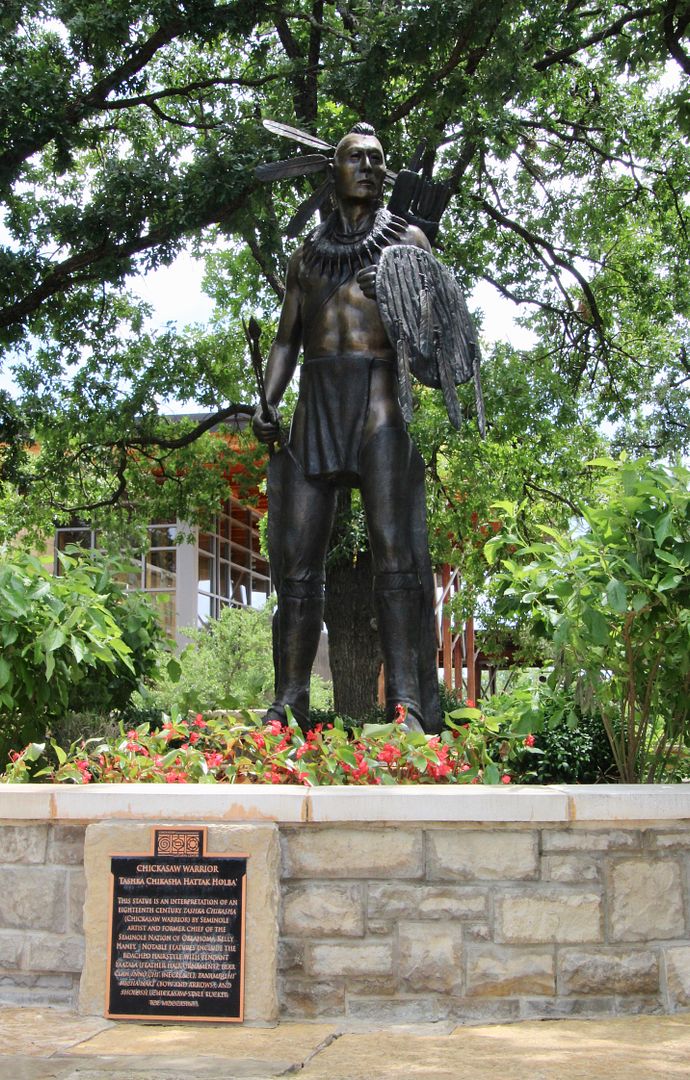

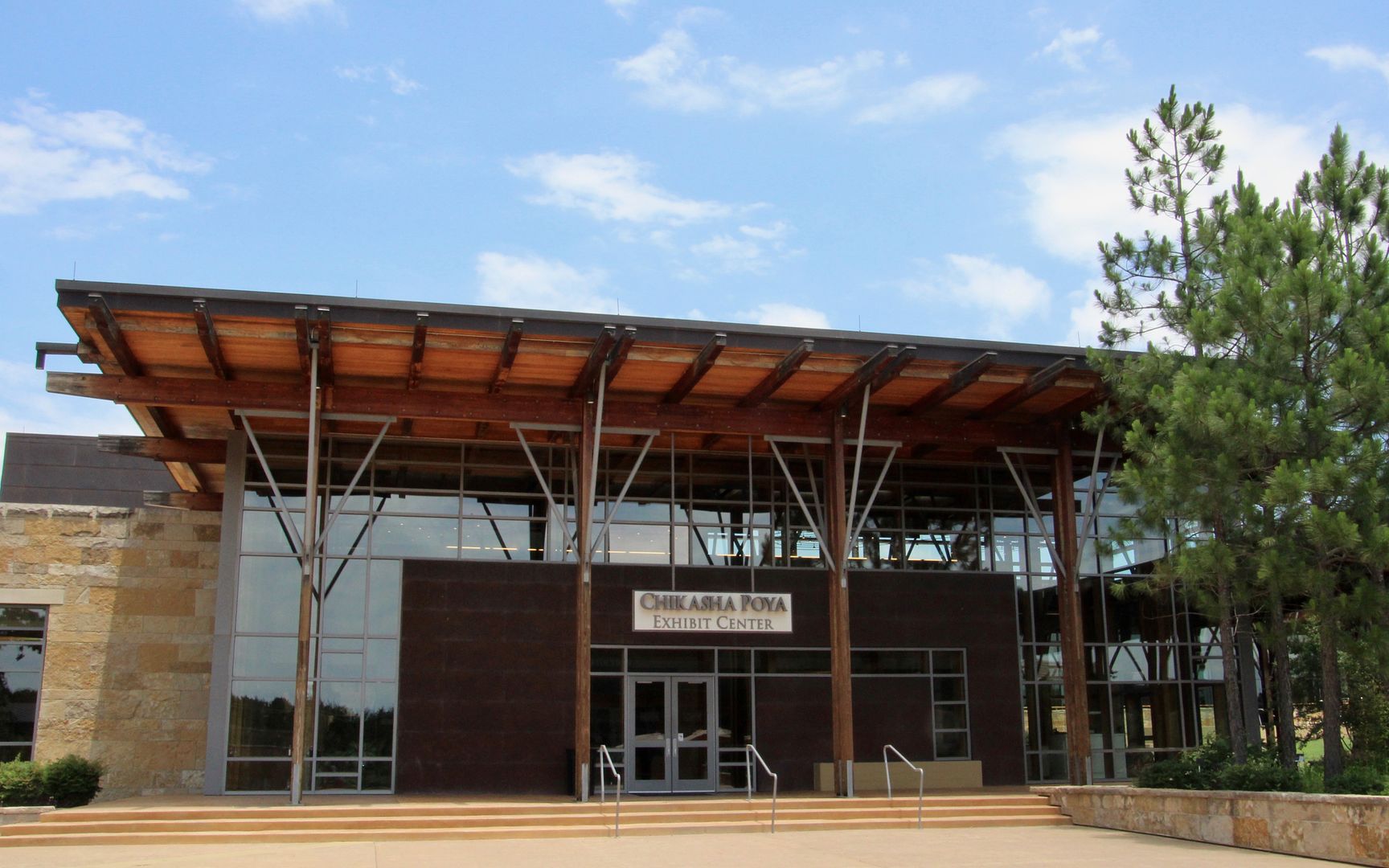
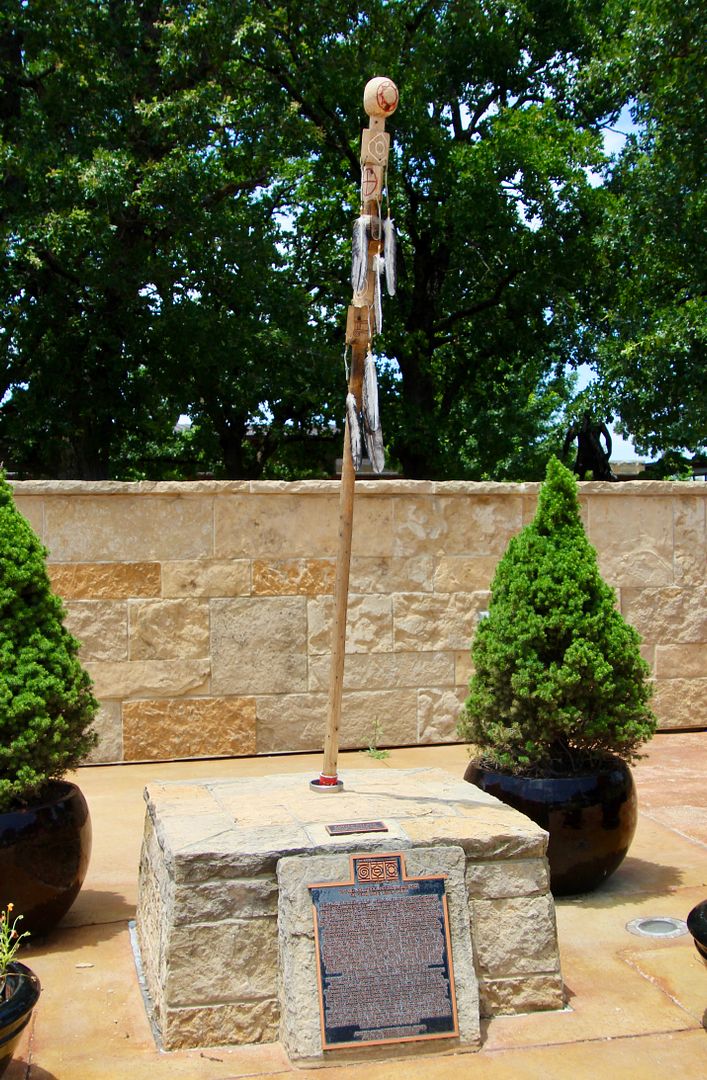
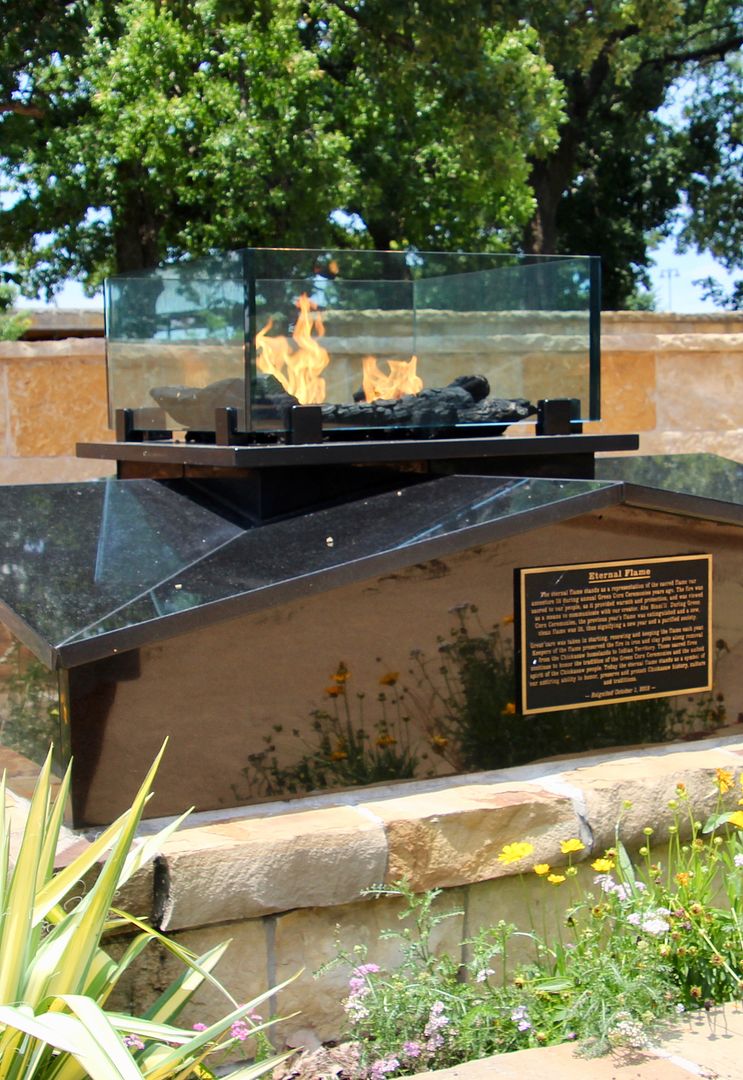

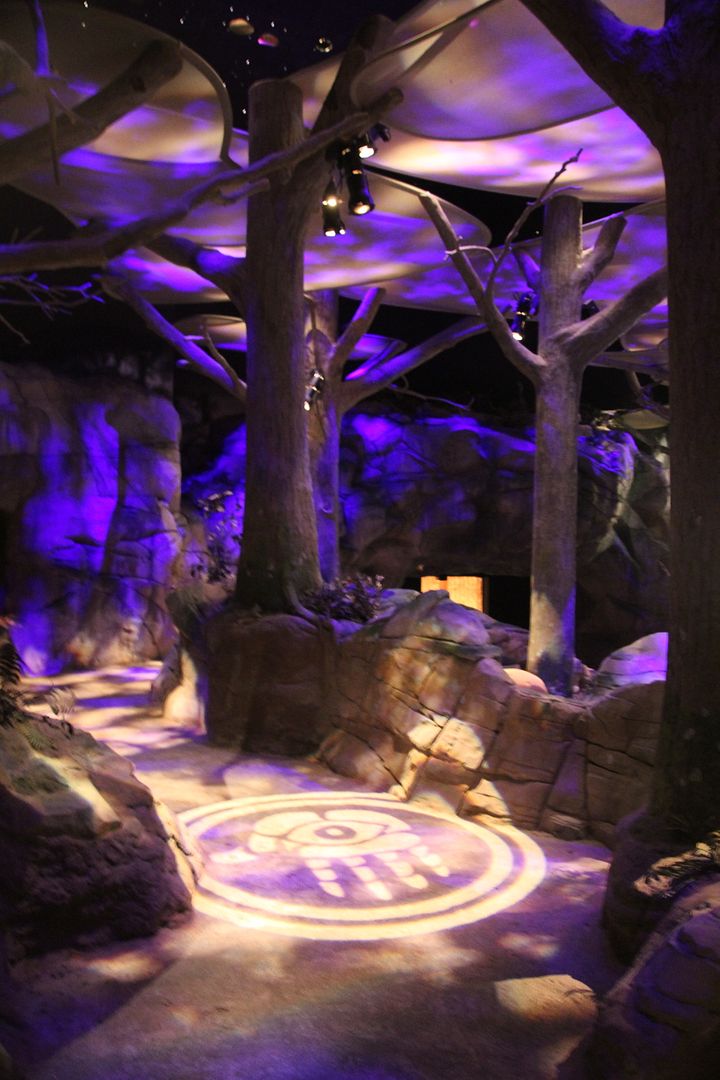
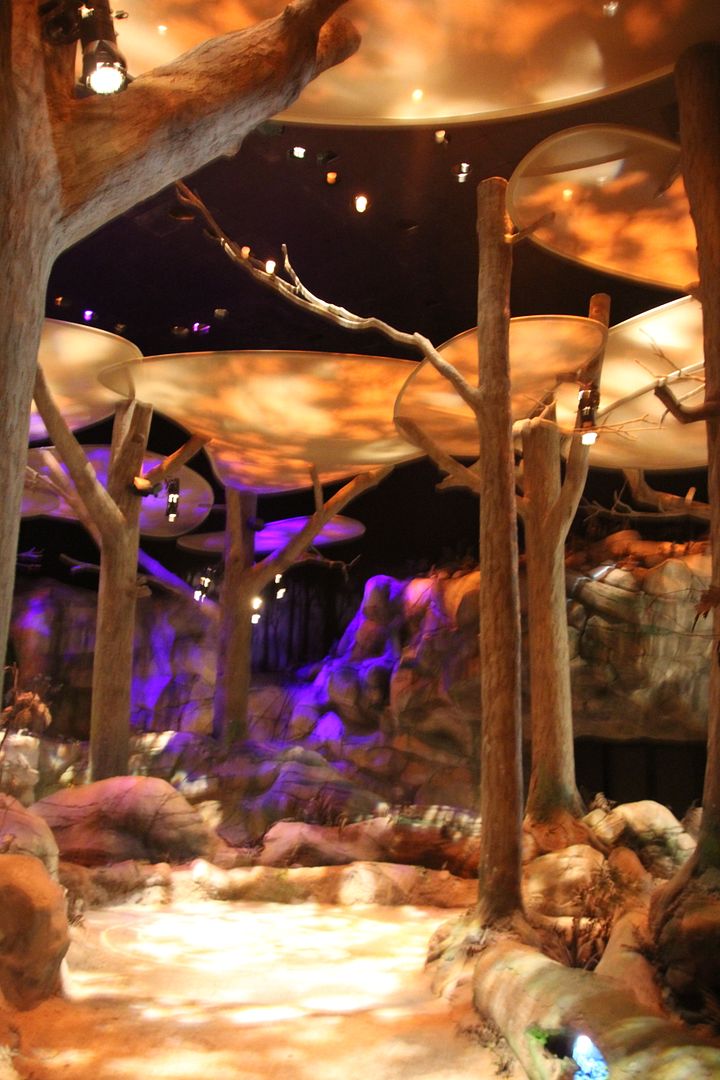
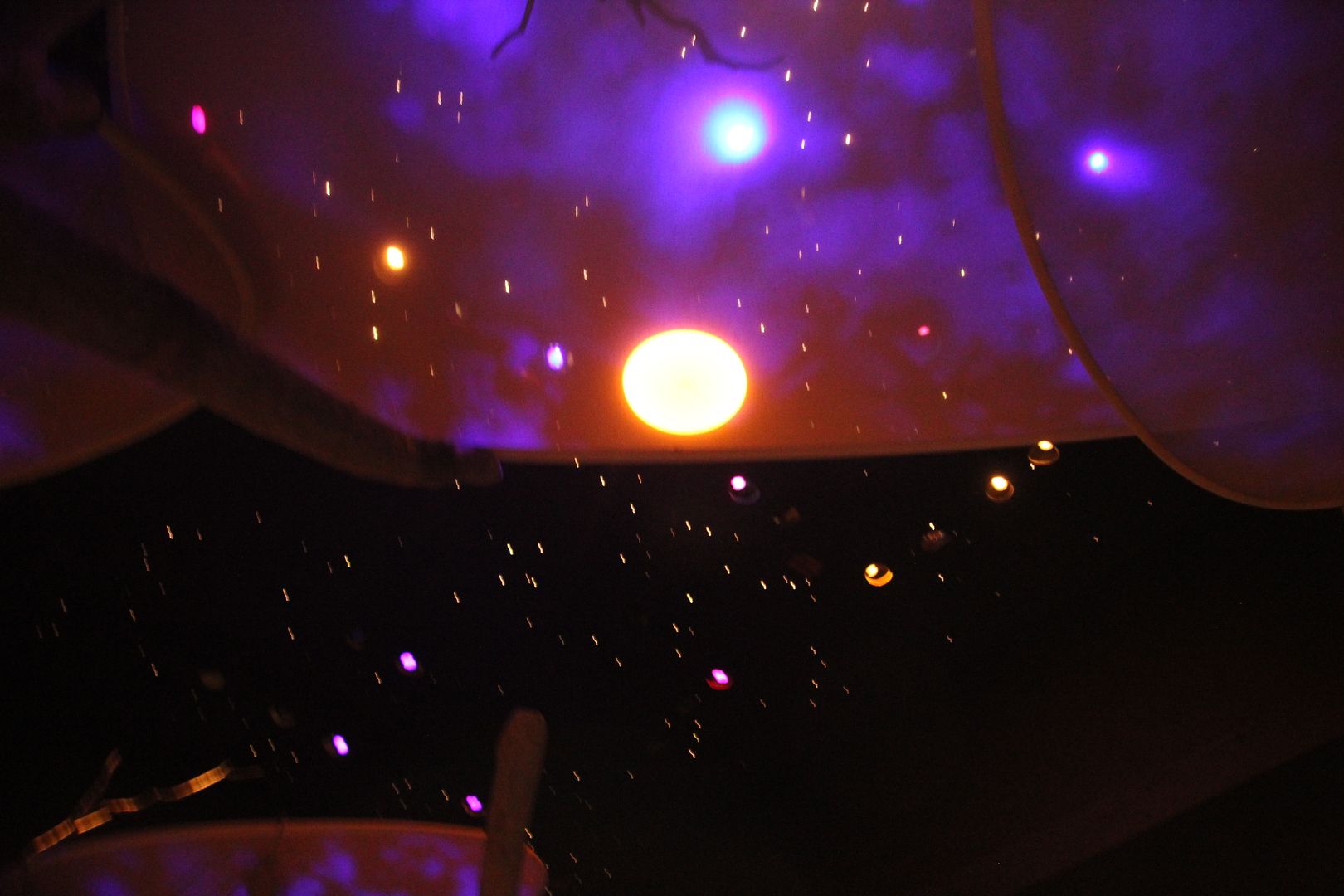

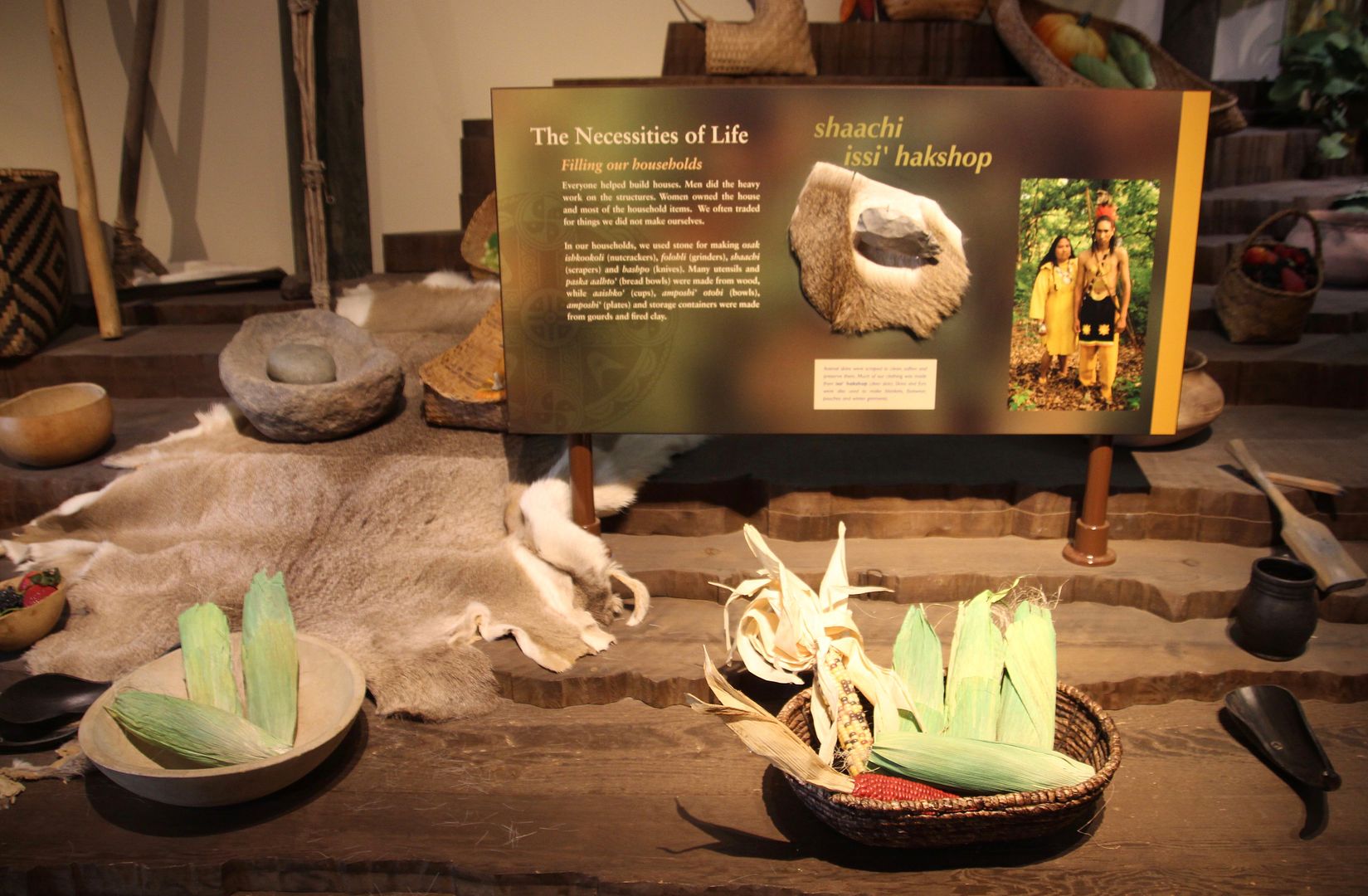
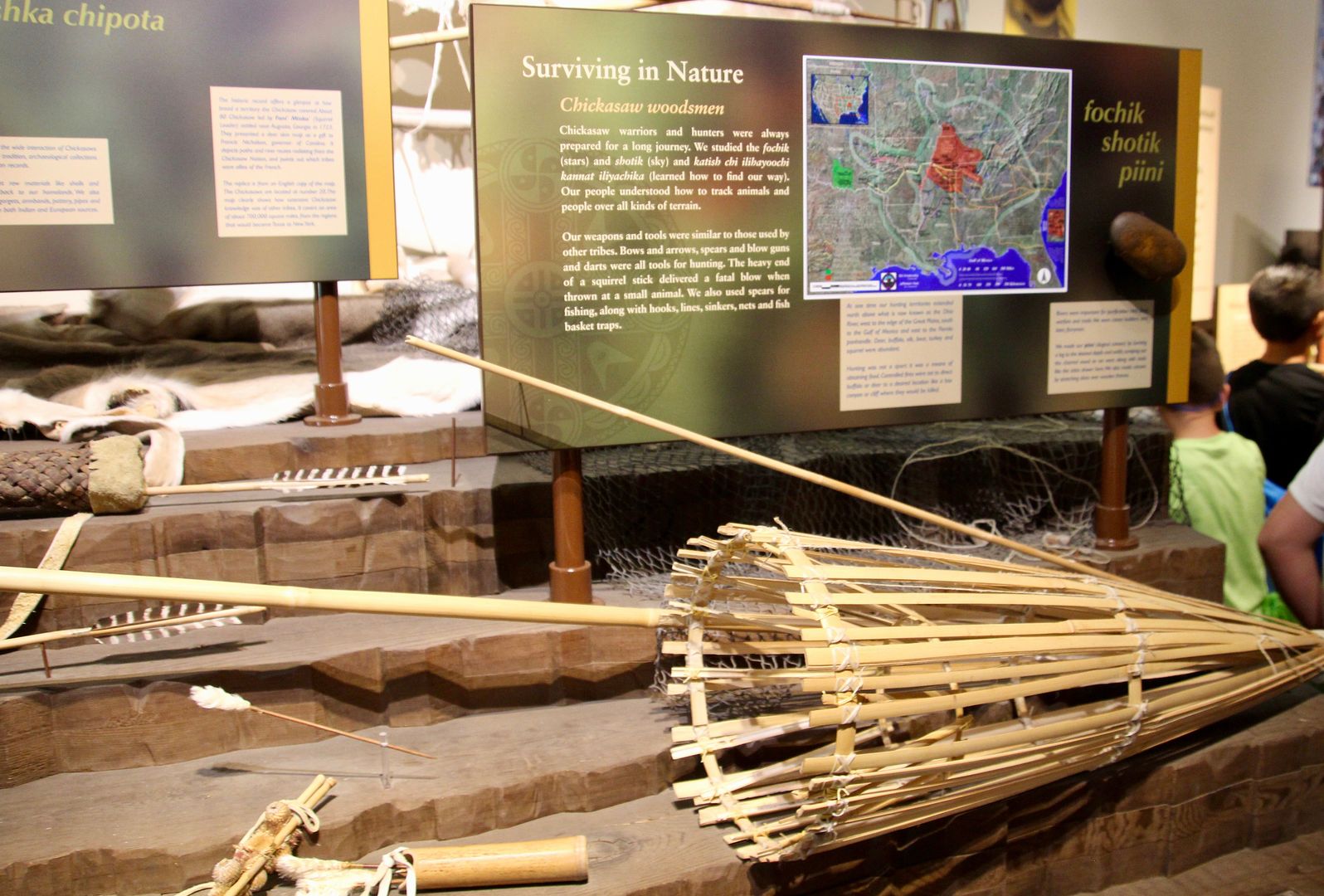
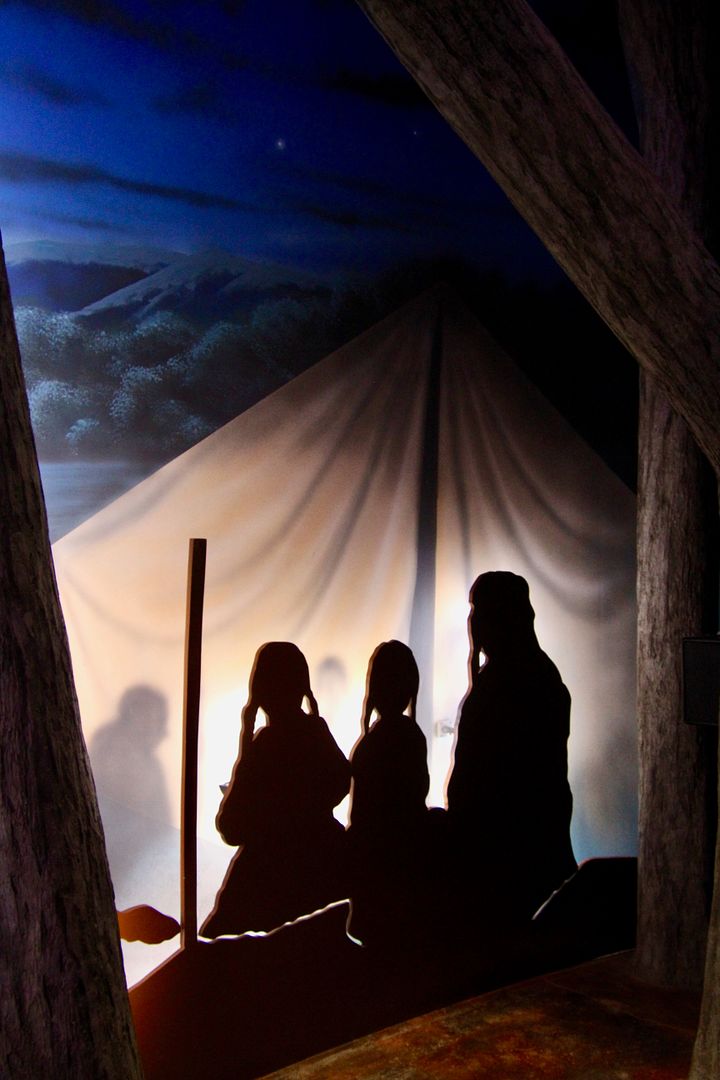


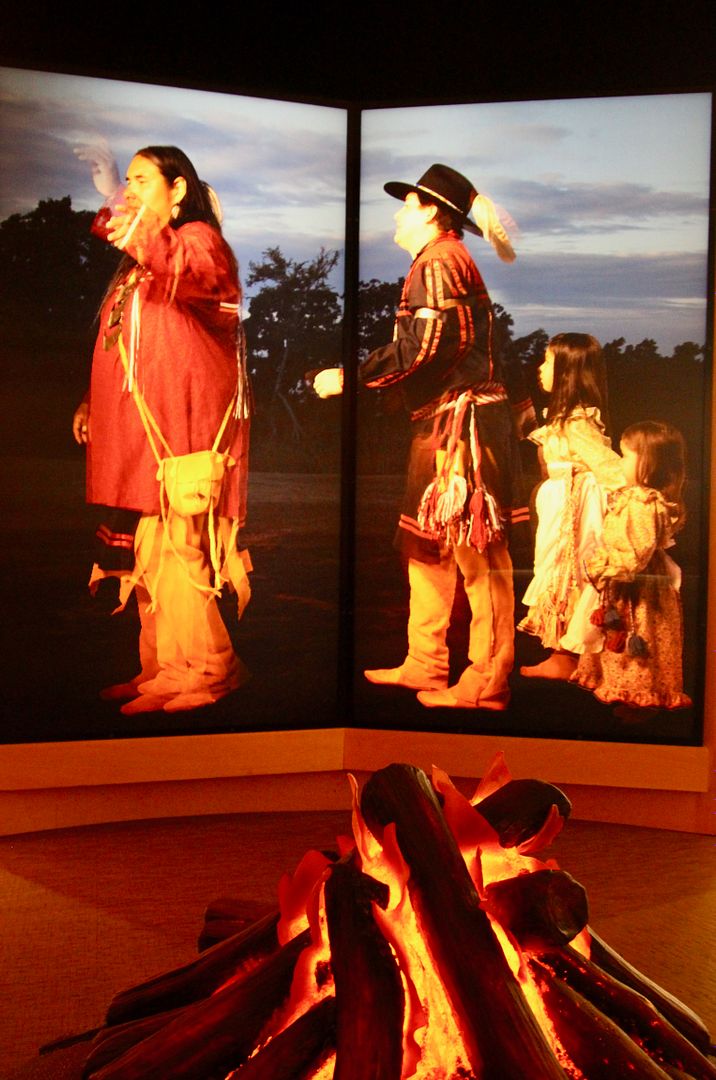
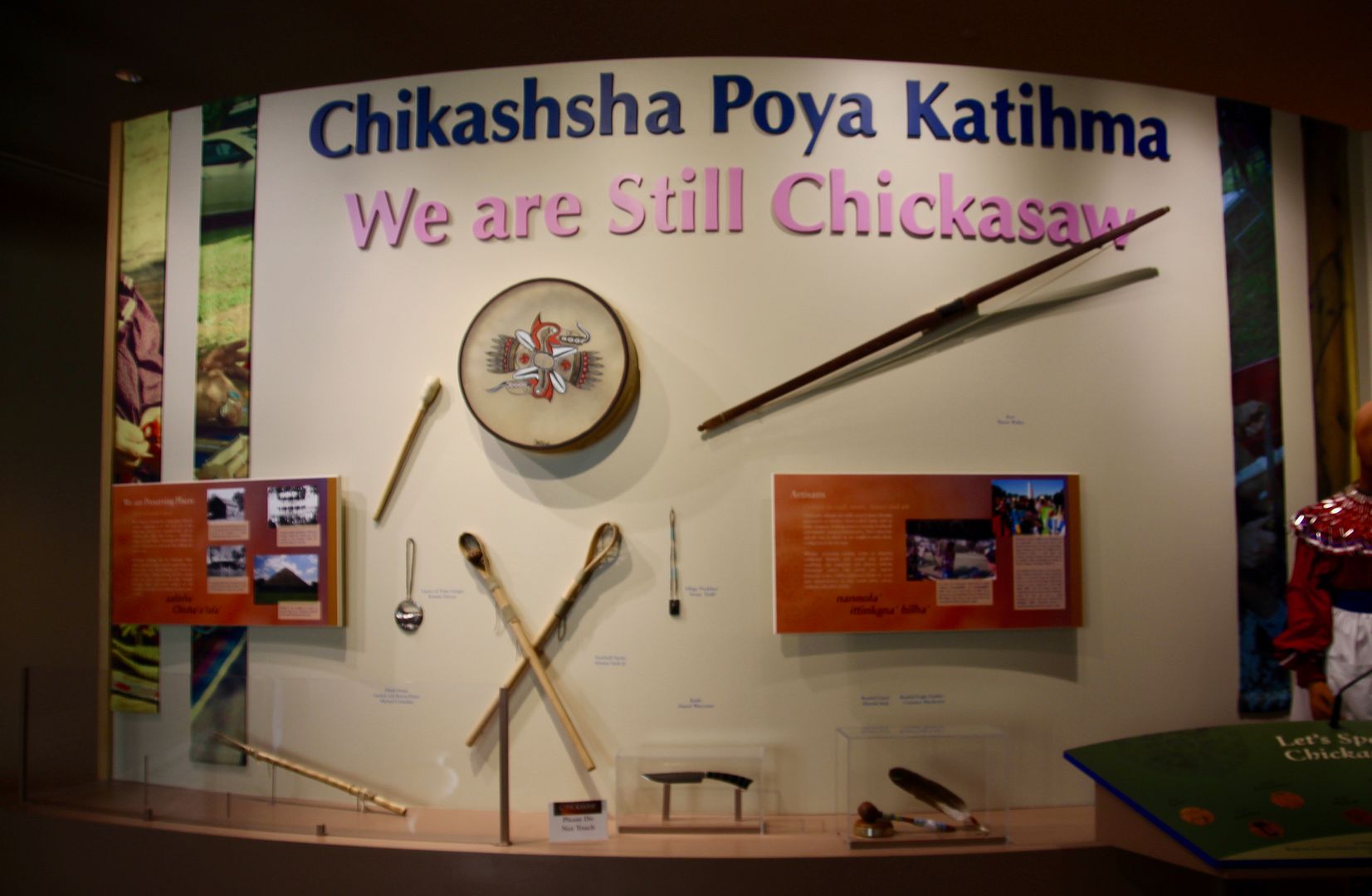
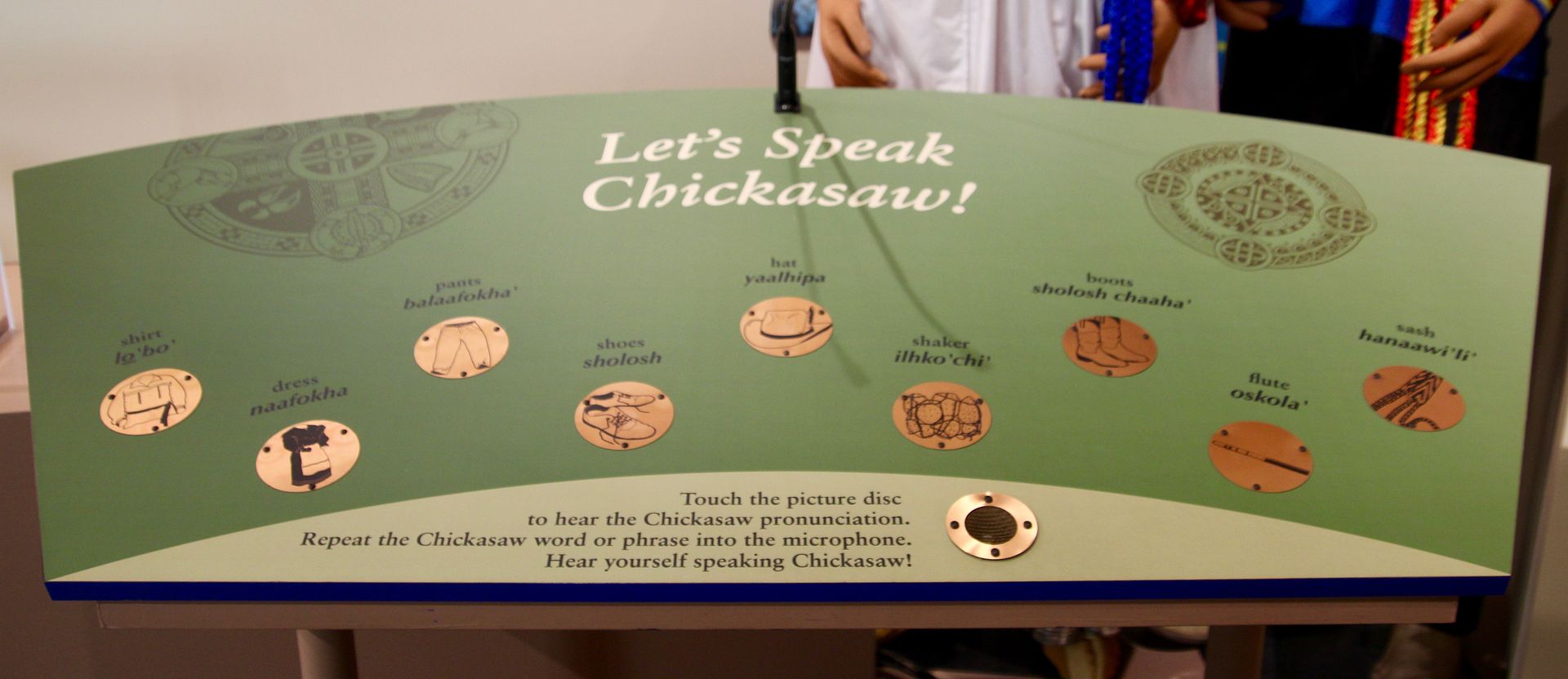
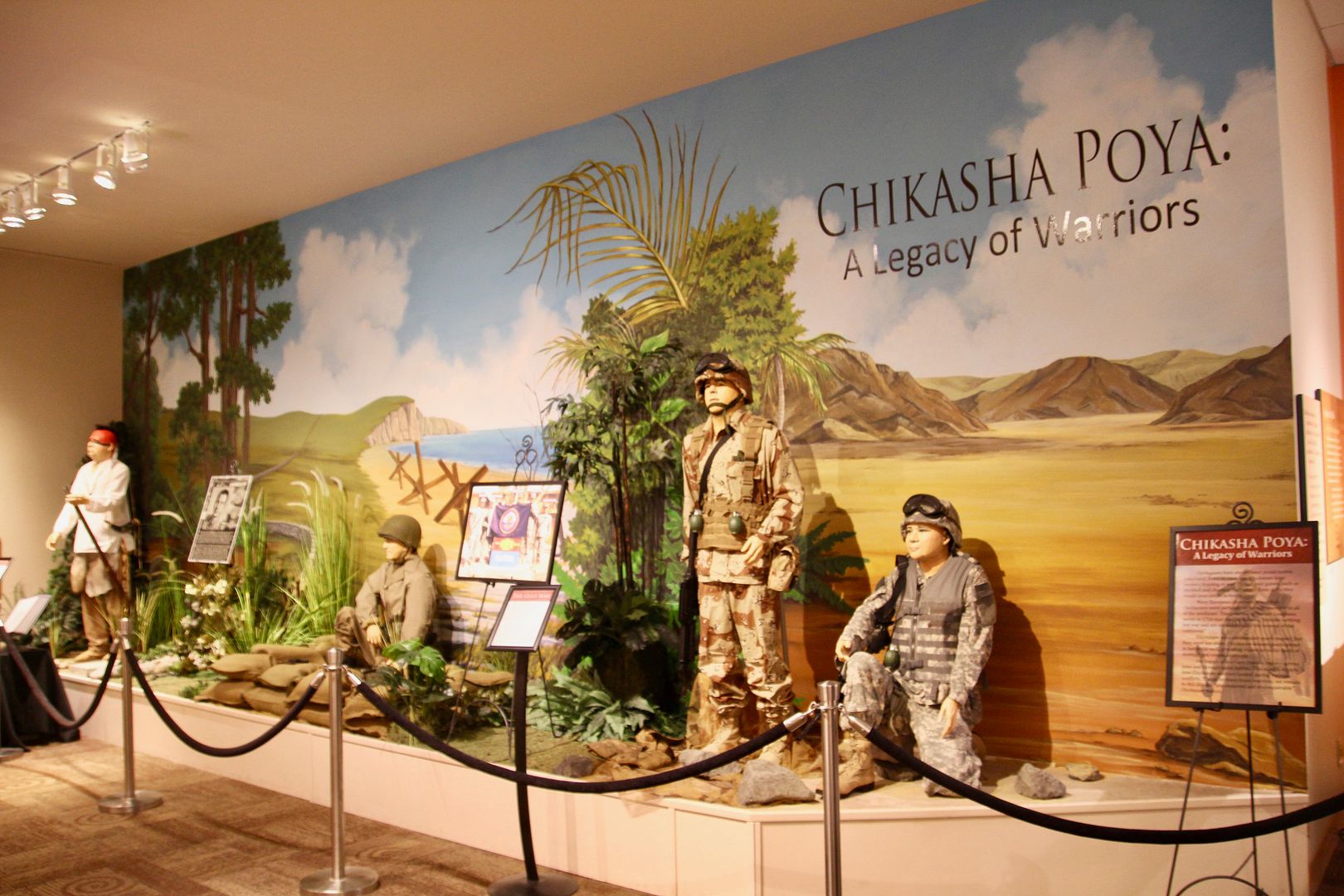
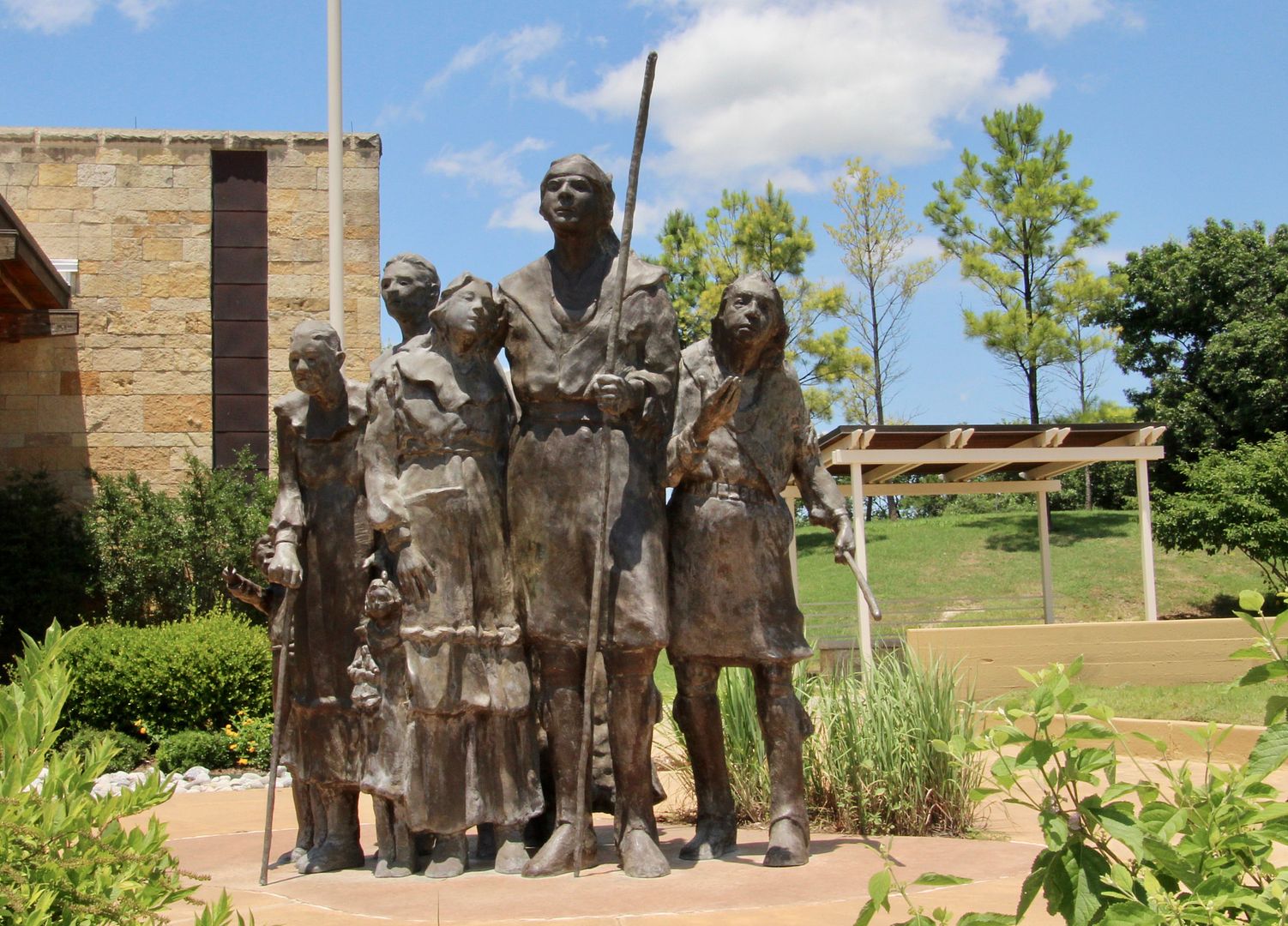
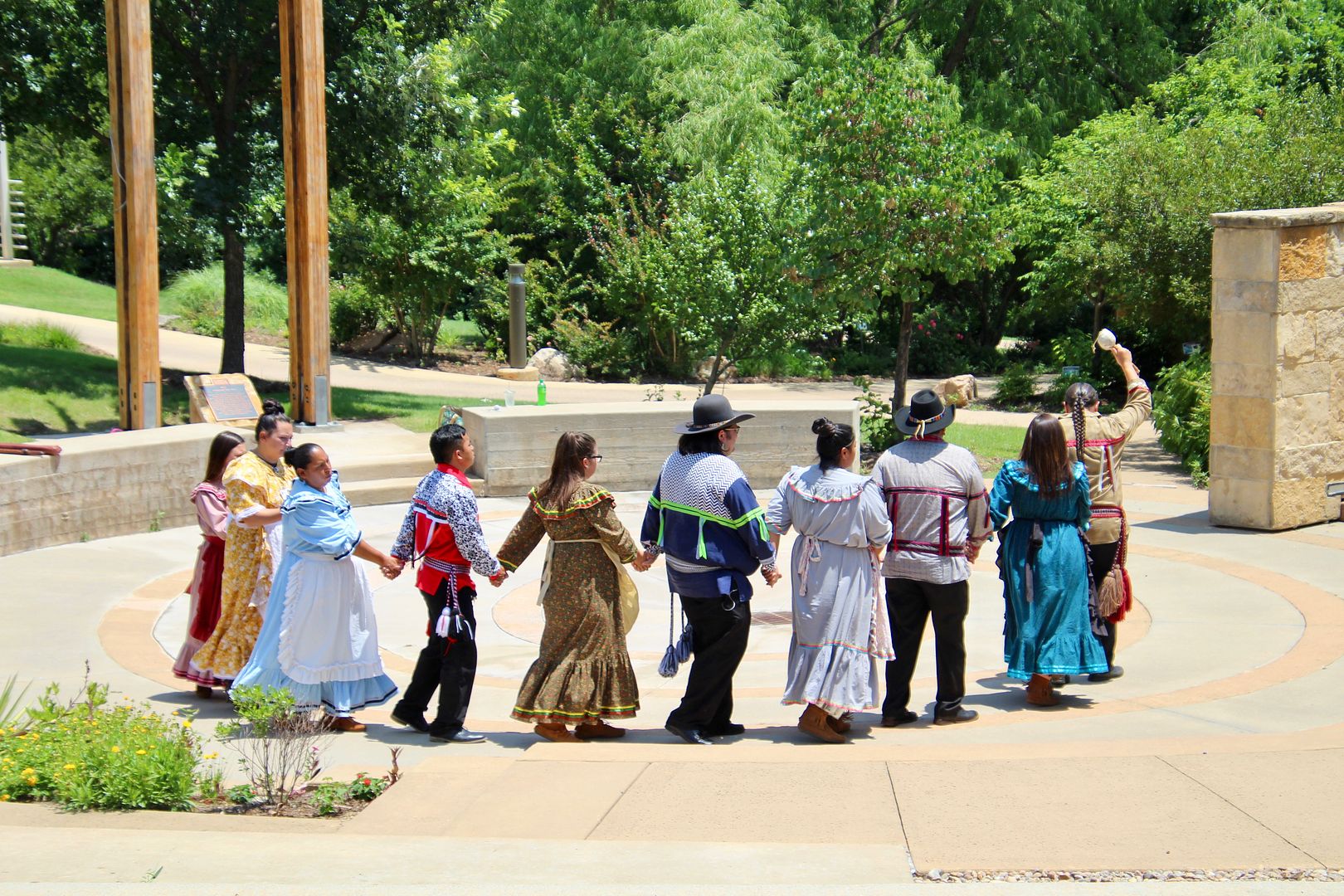

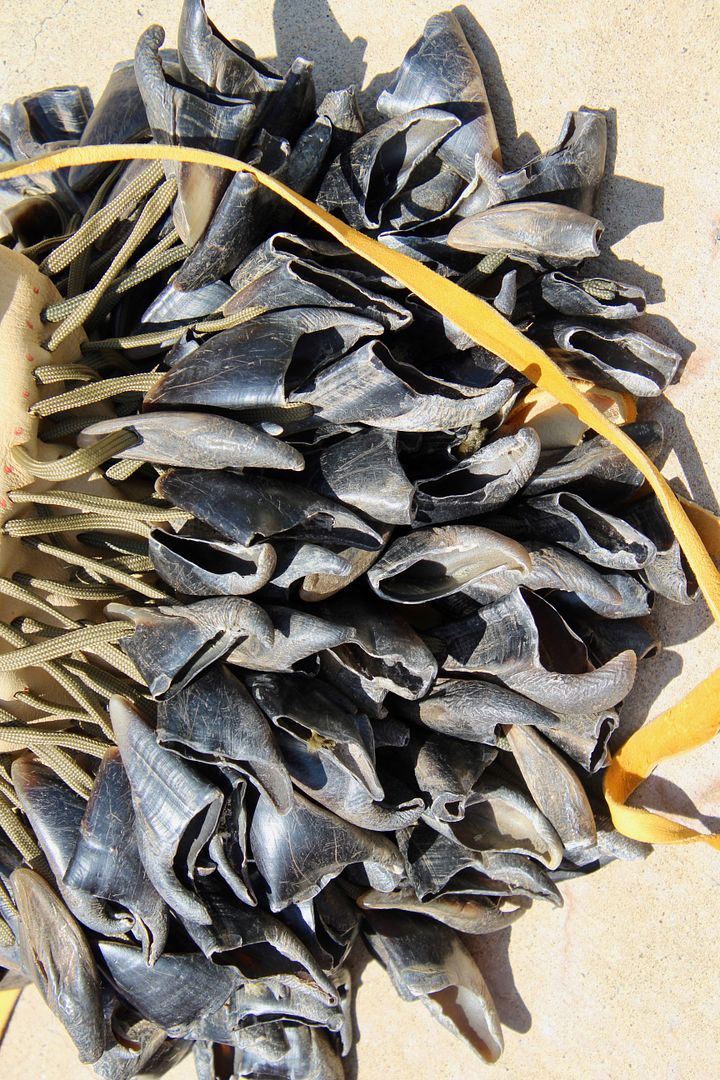
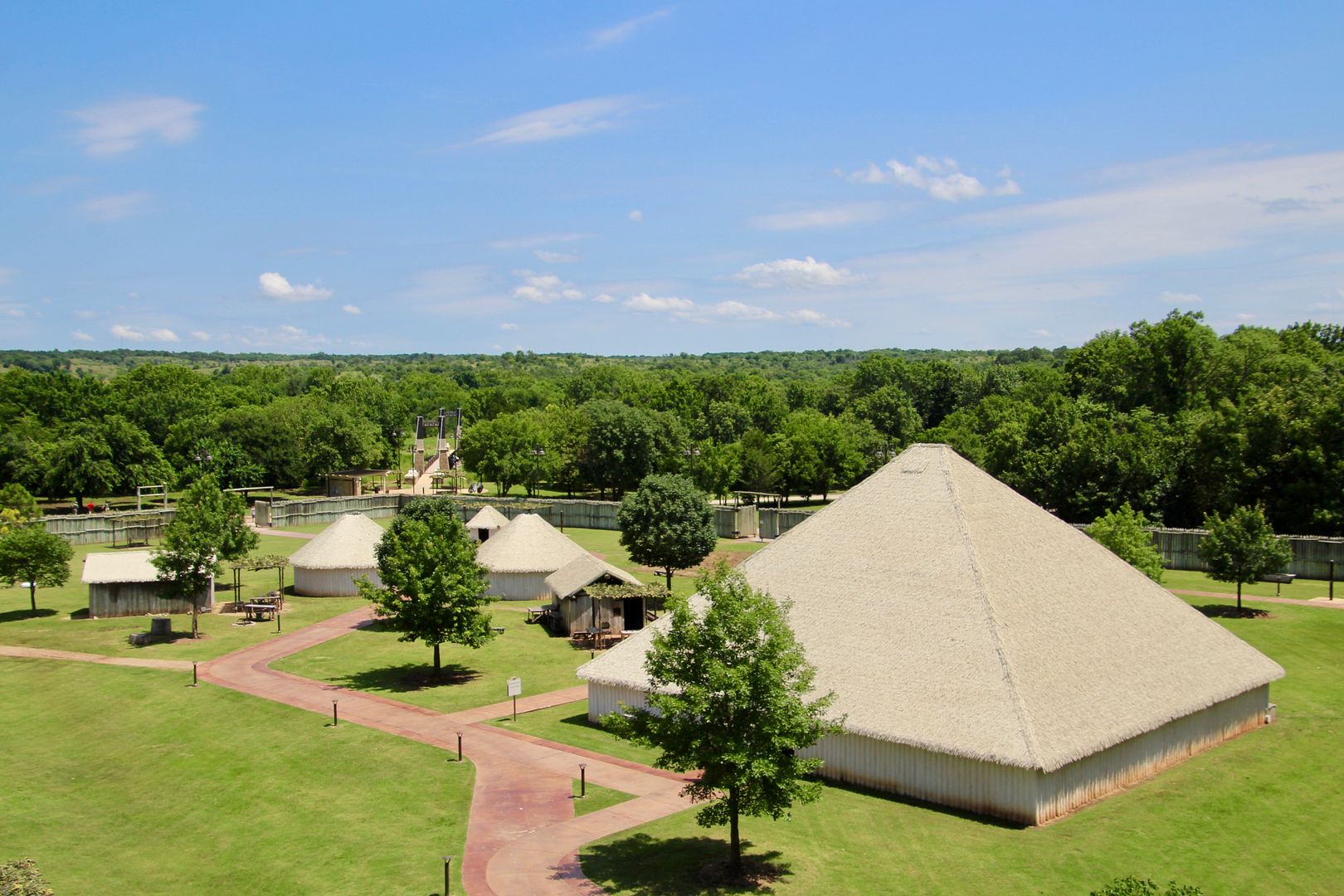
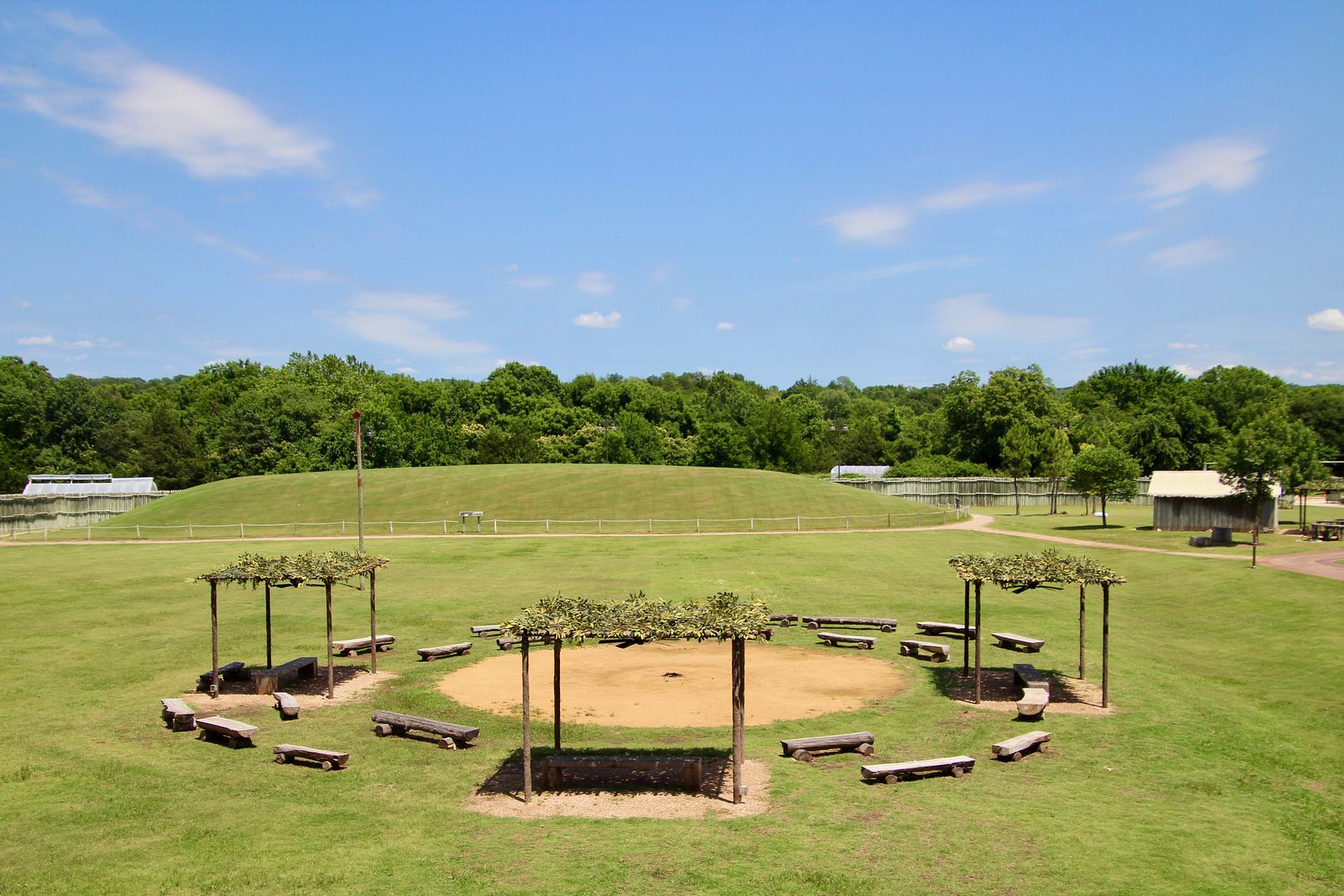
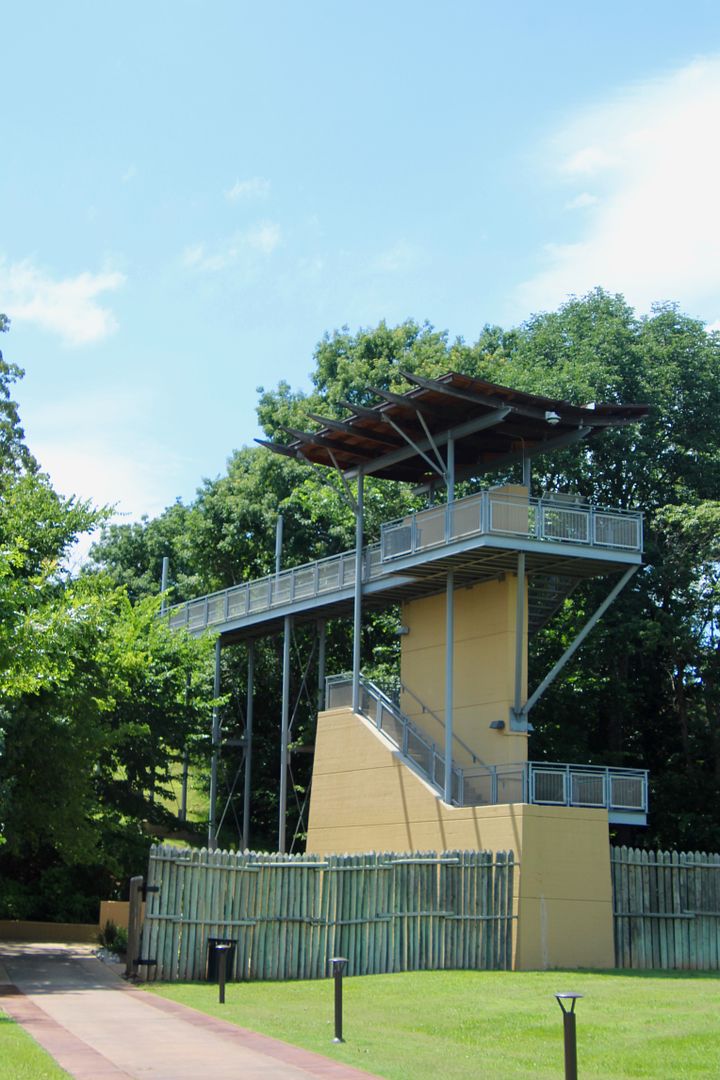
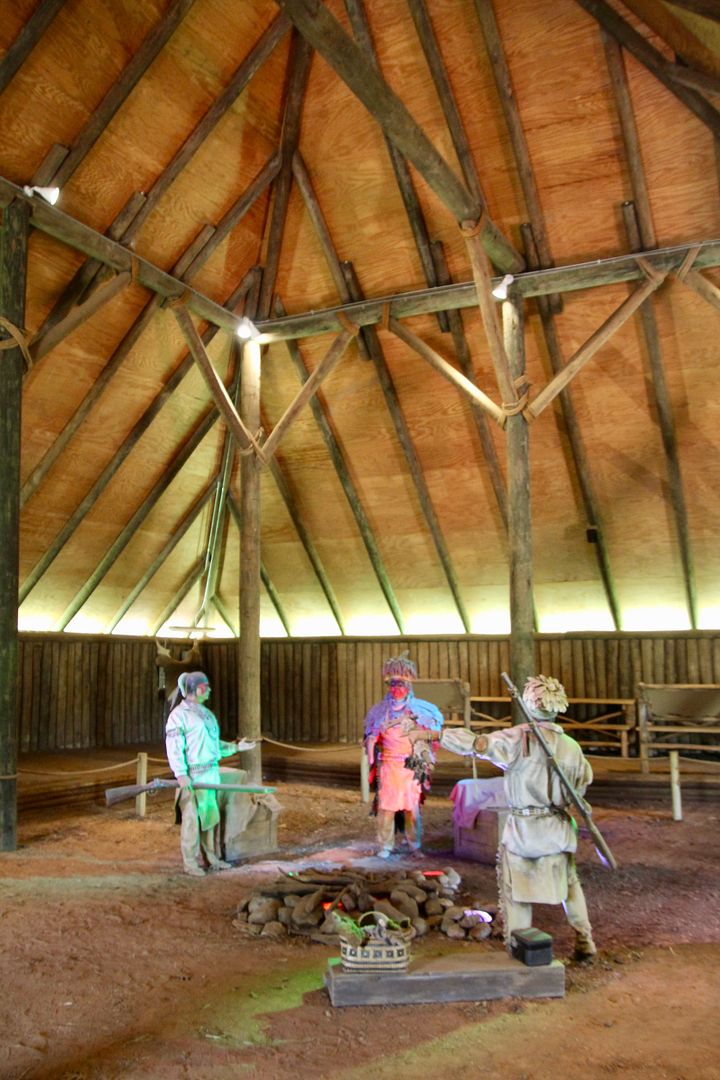
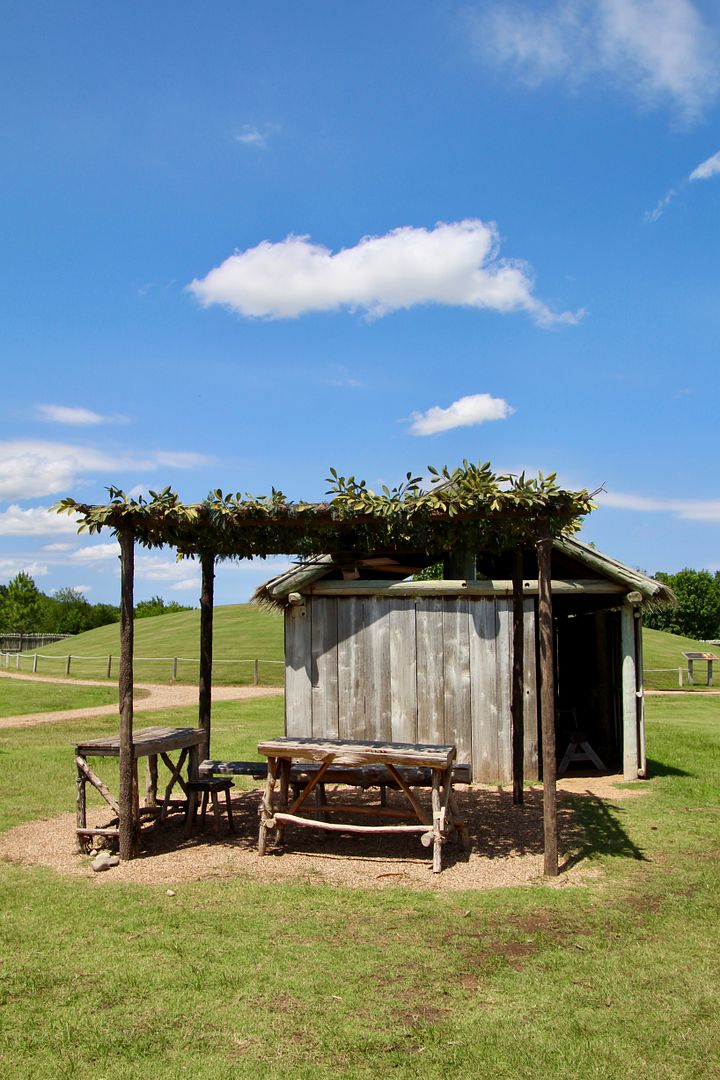
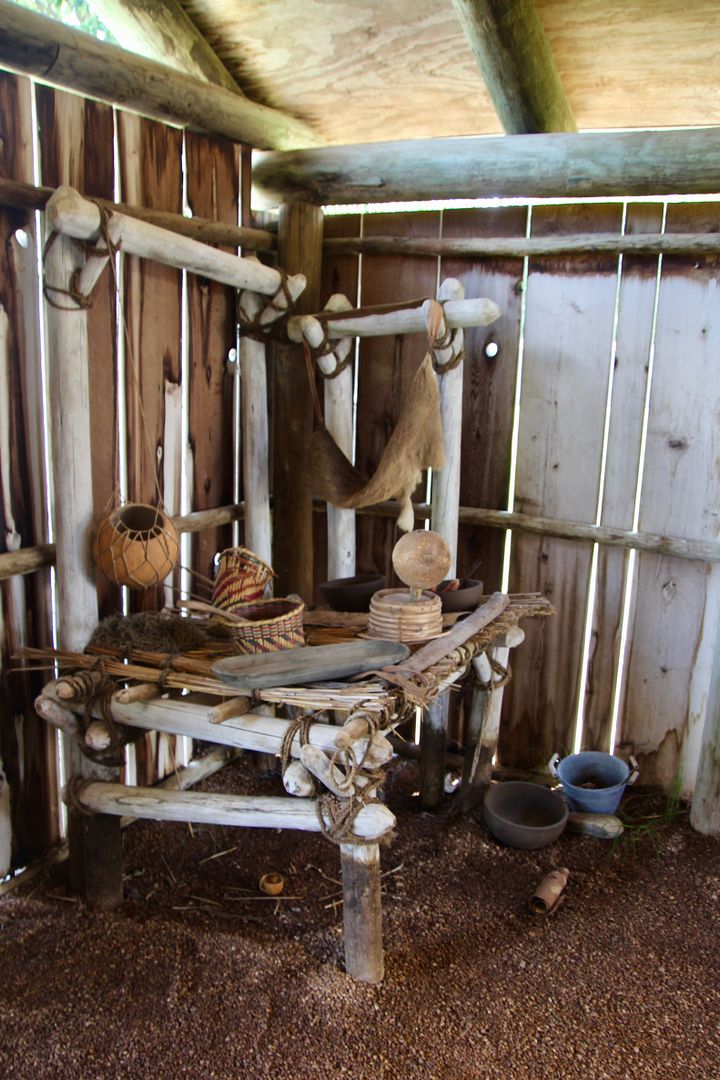


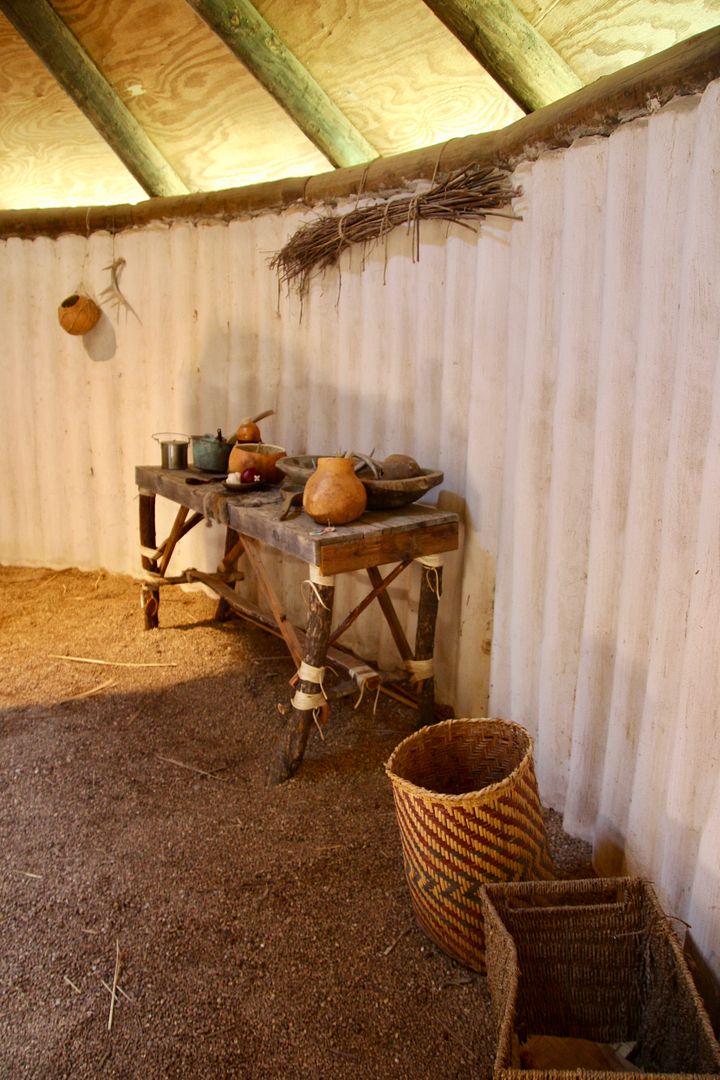
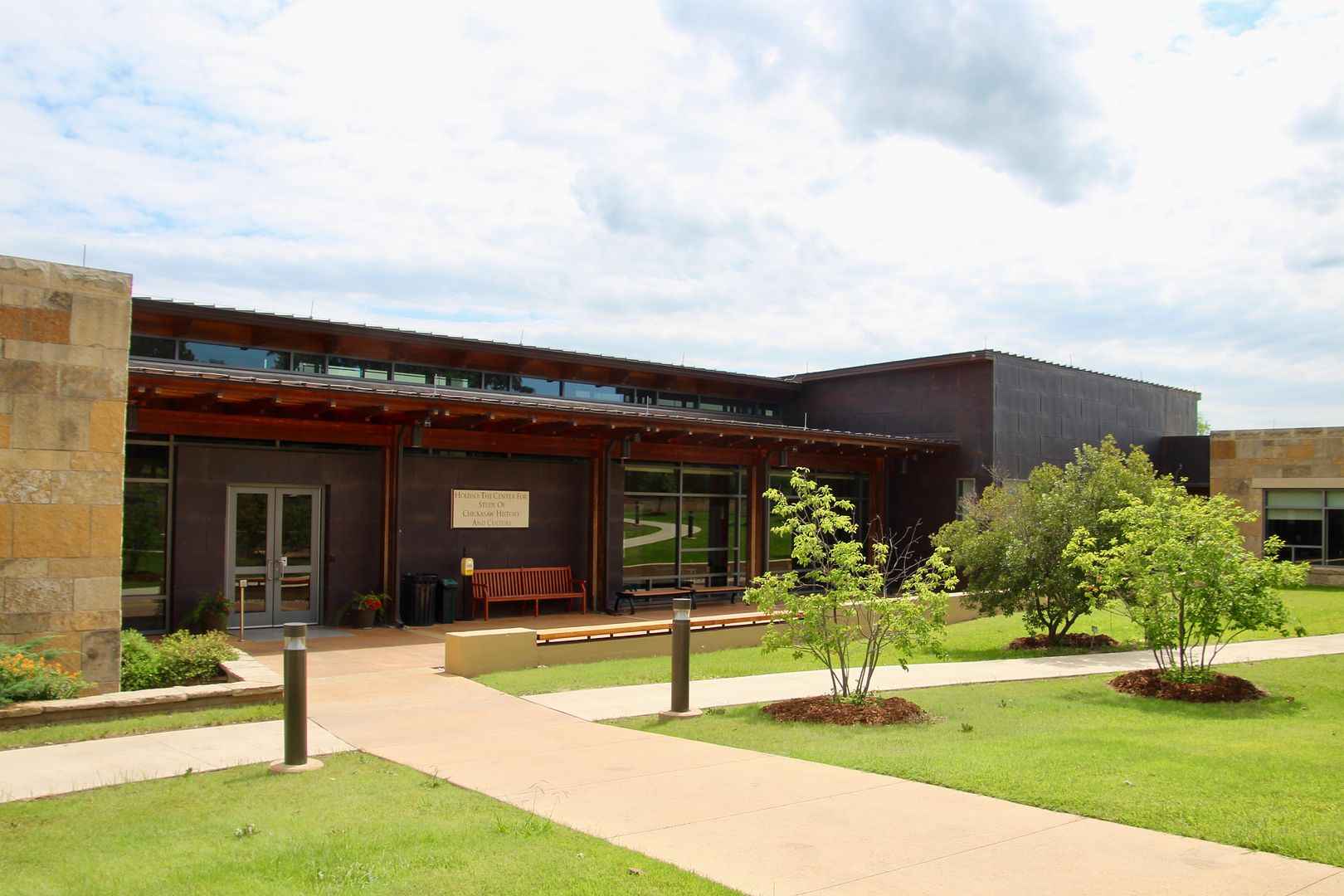

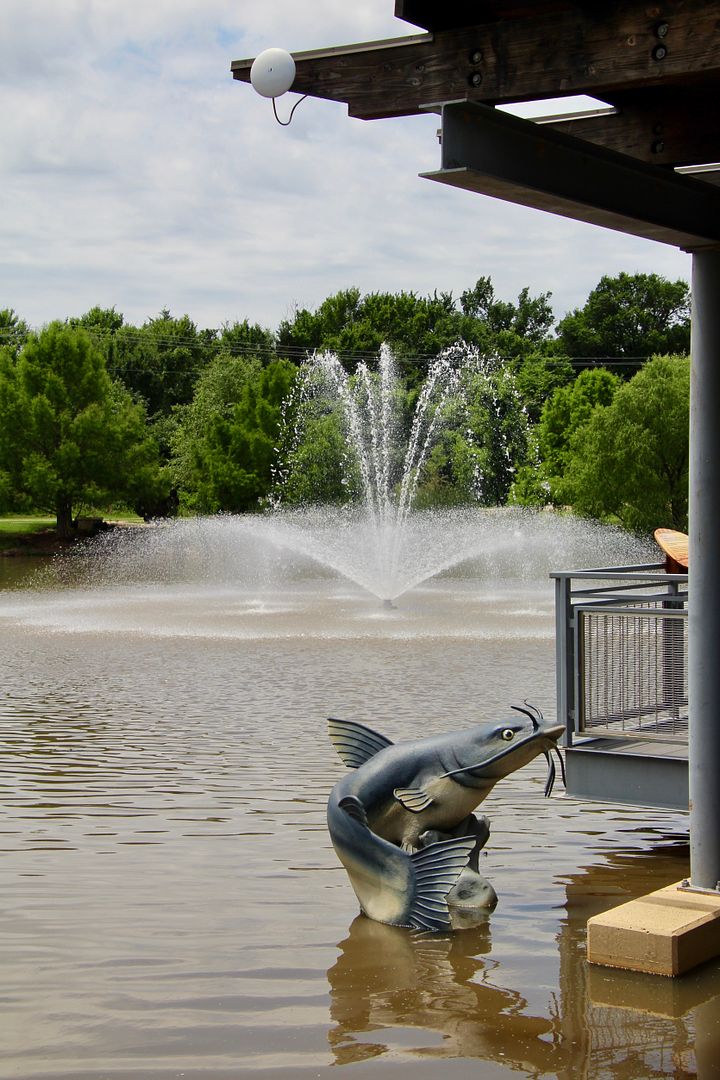
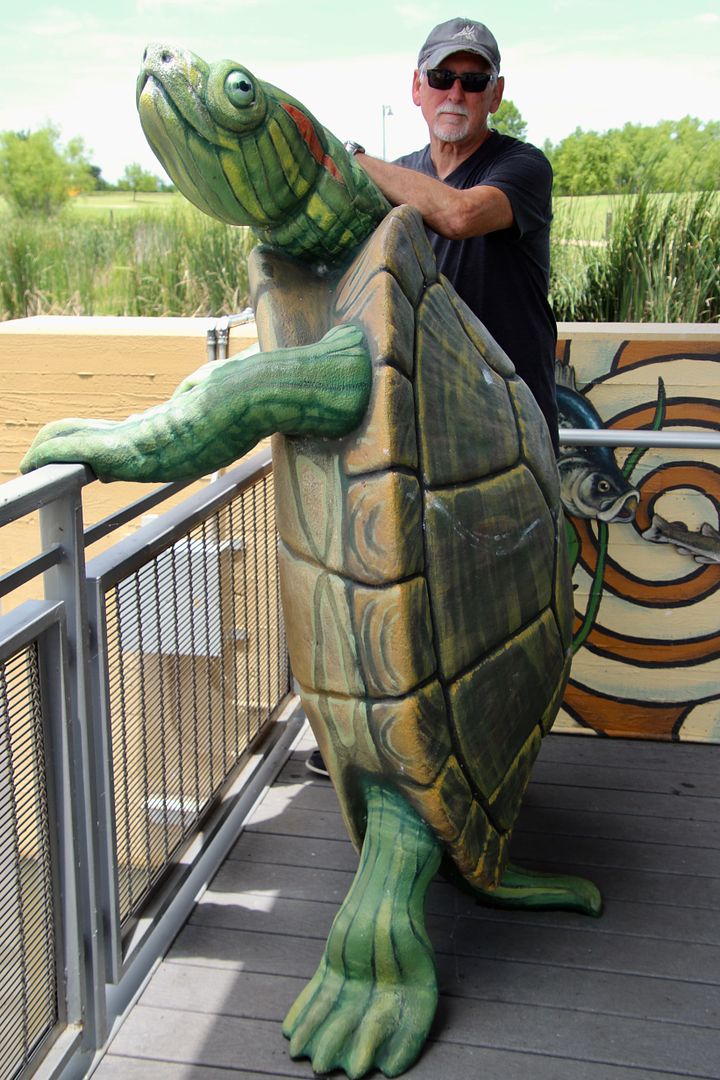


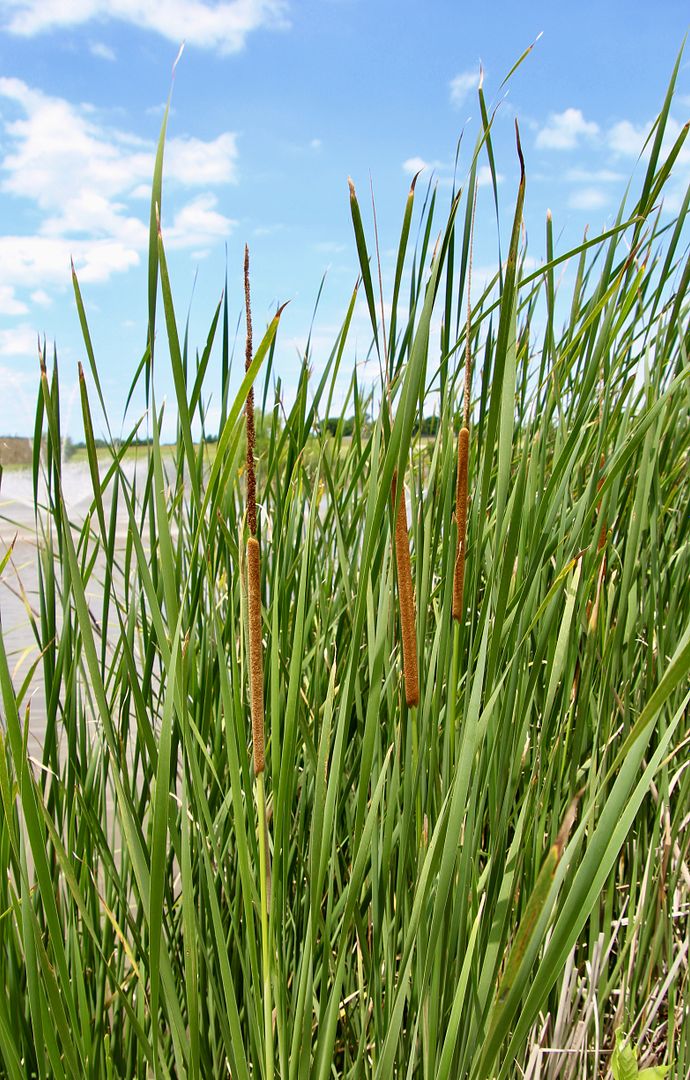
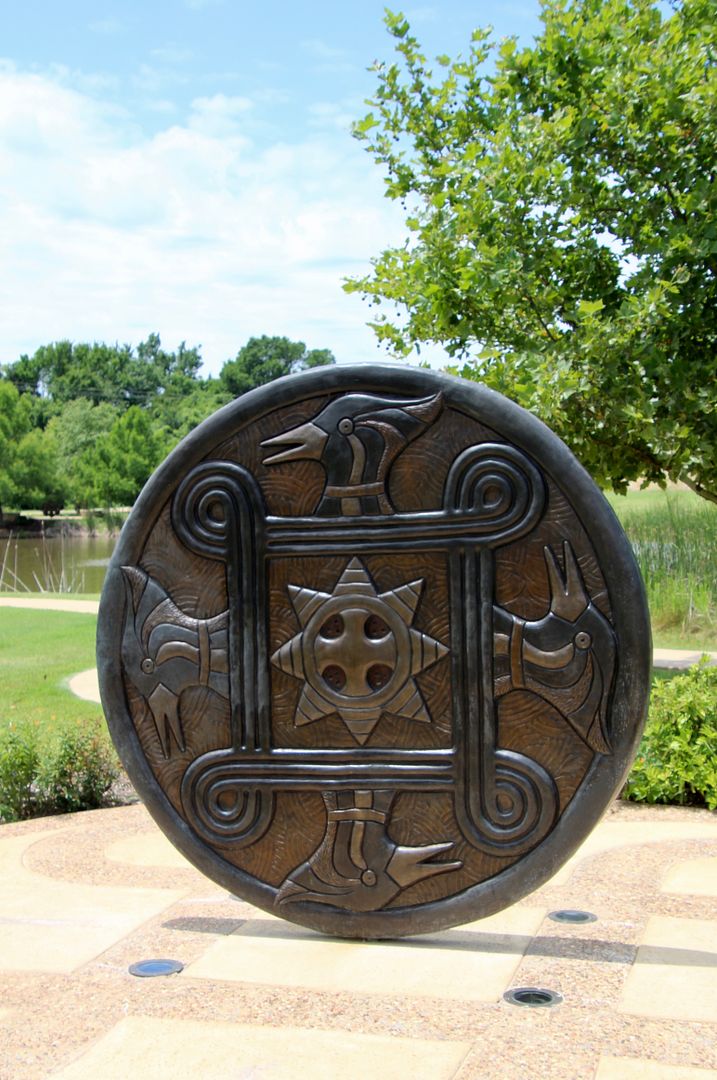
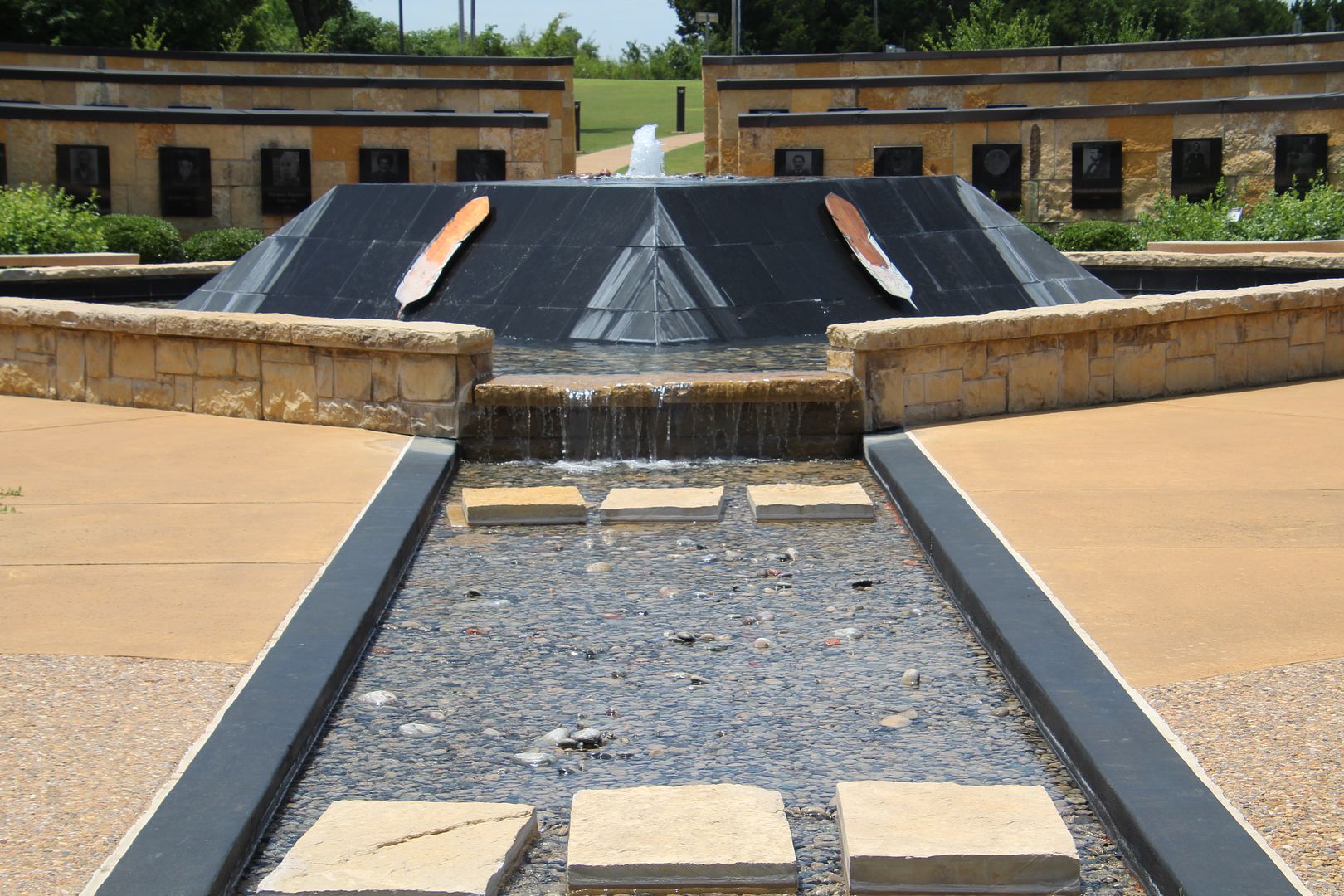

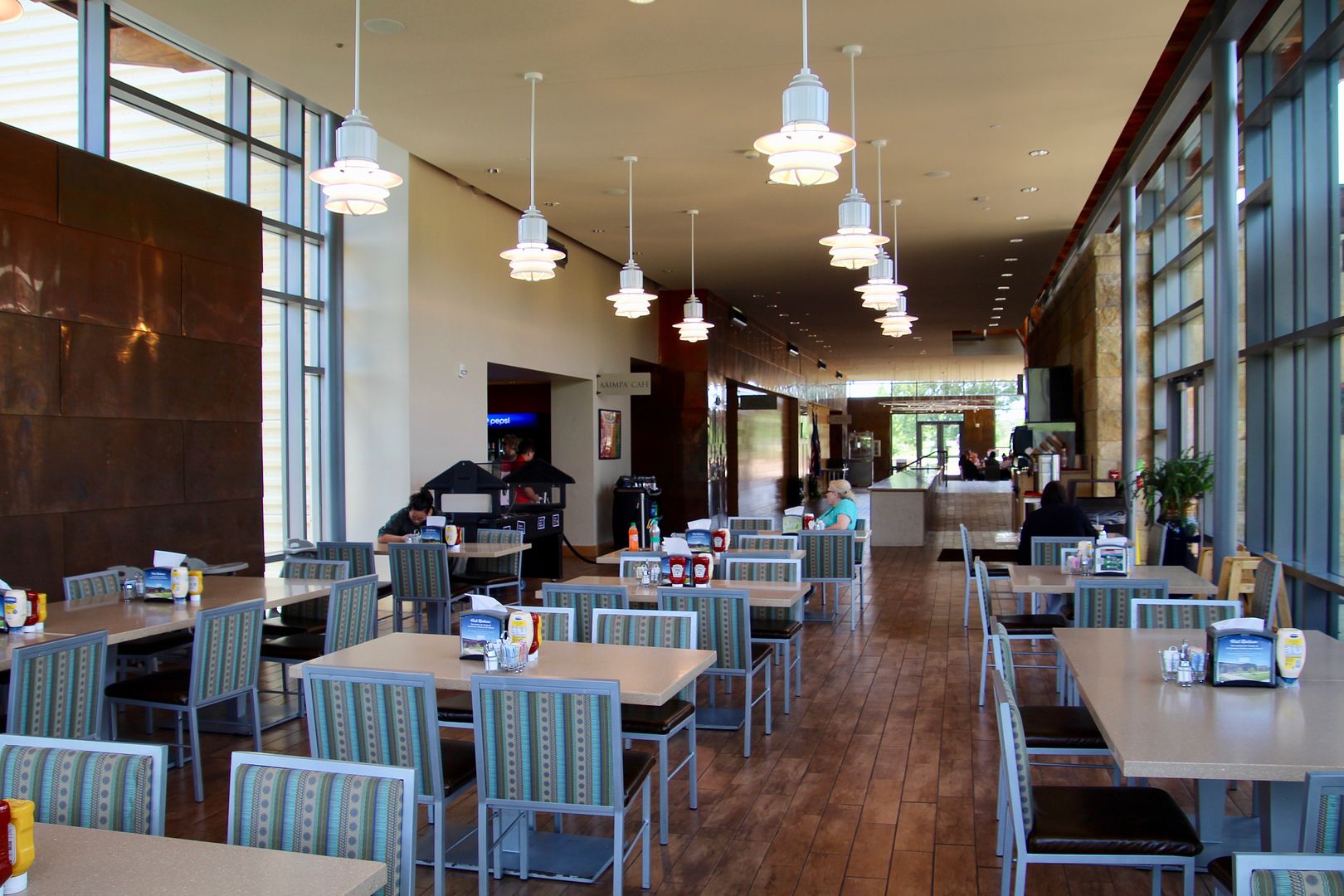

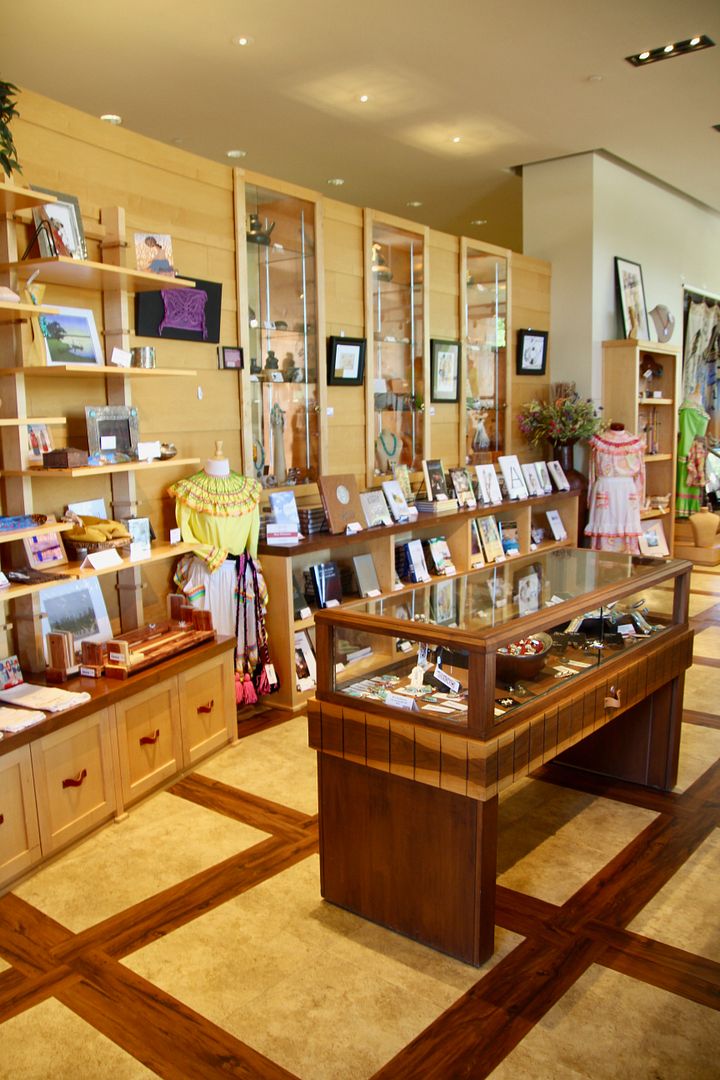
No comments:
Post a Comment